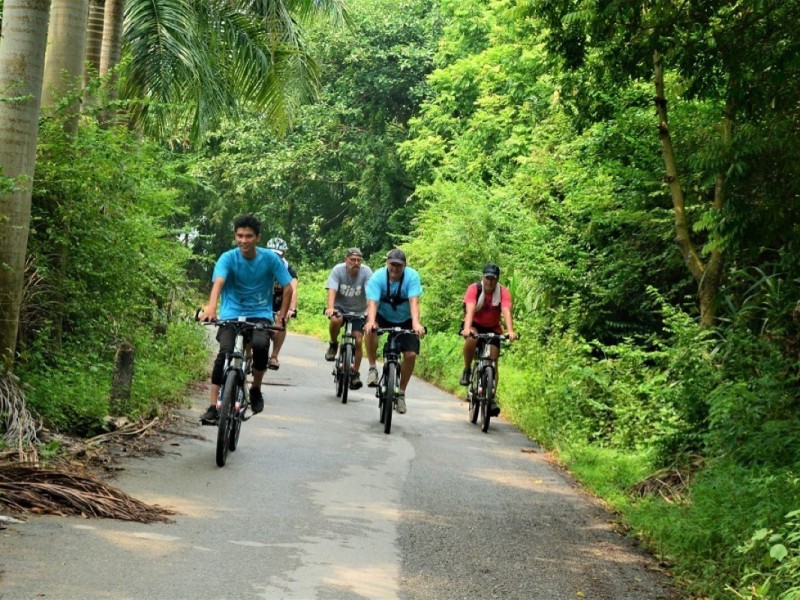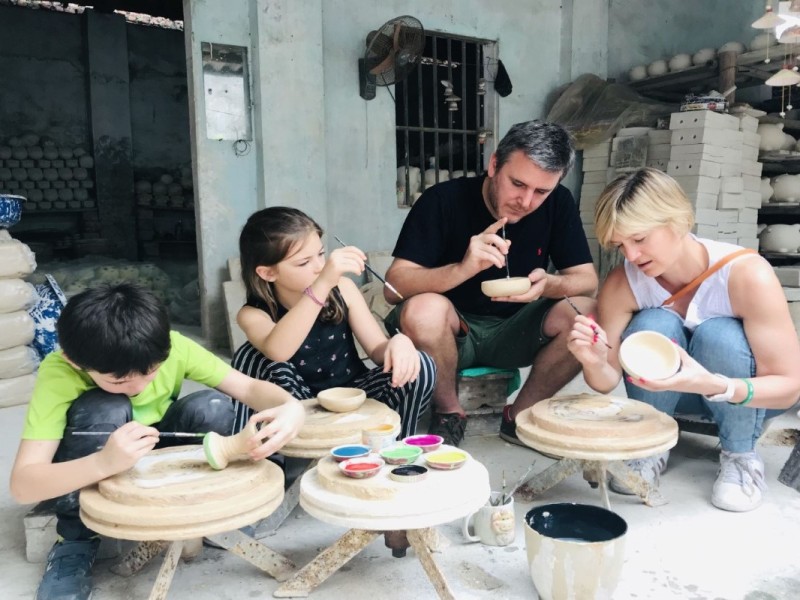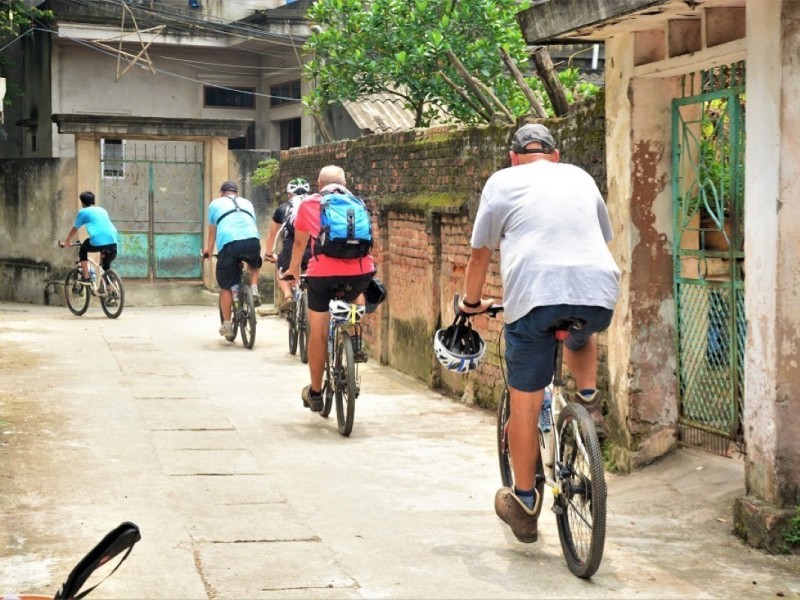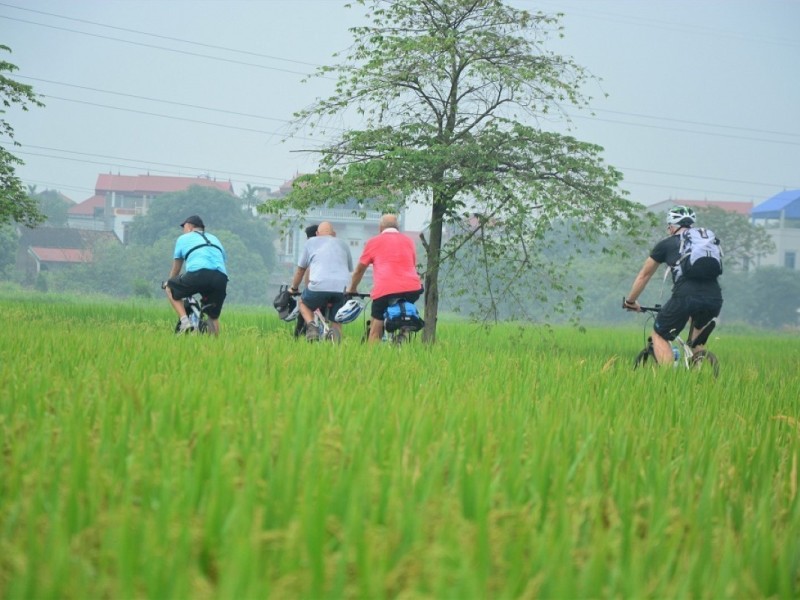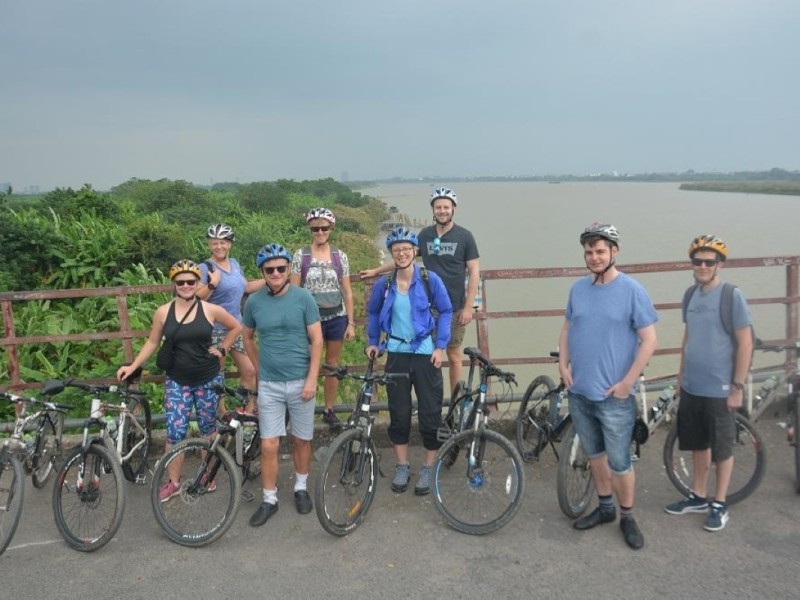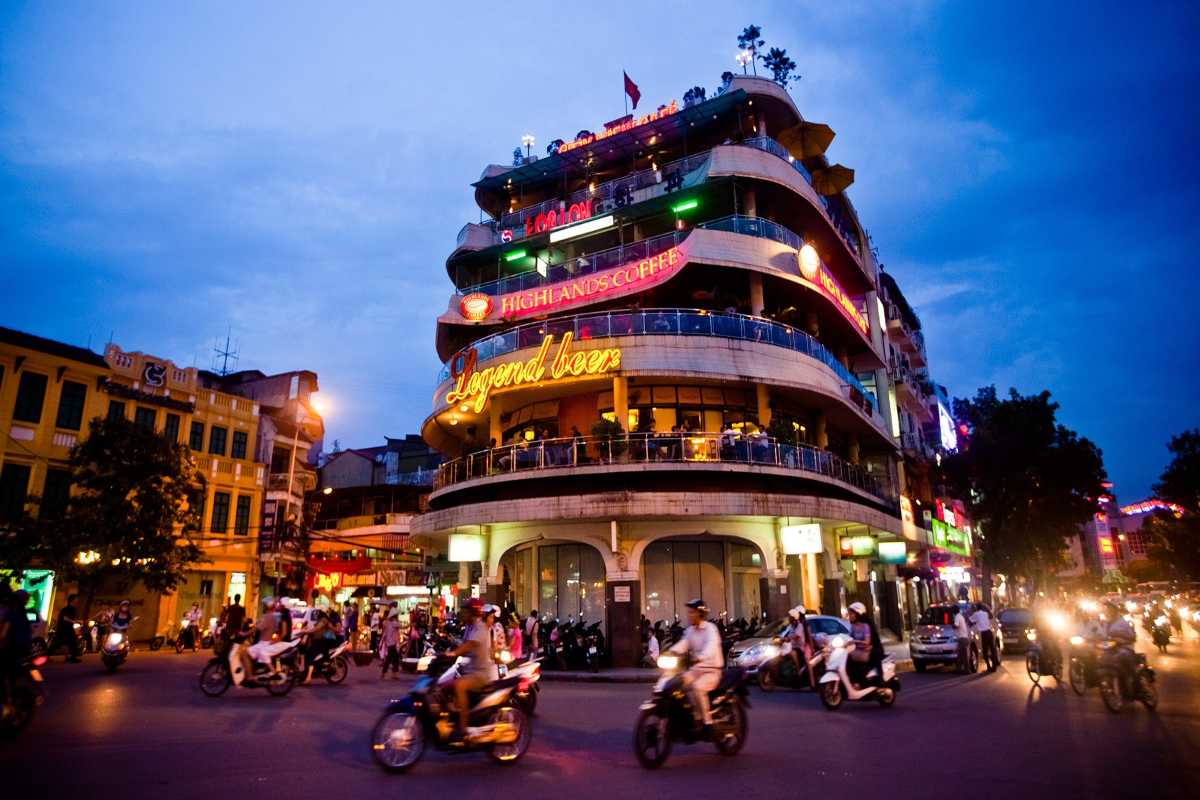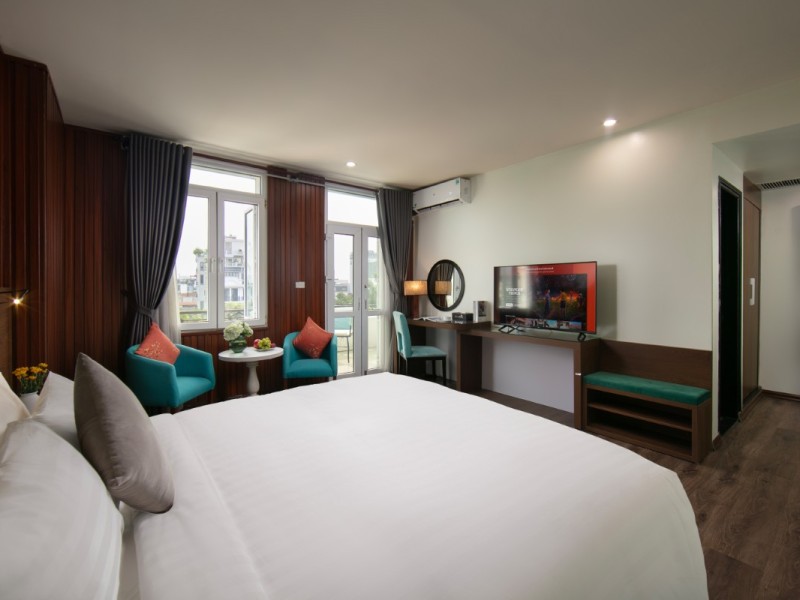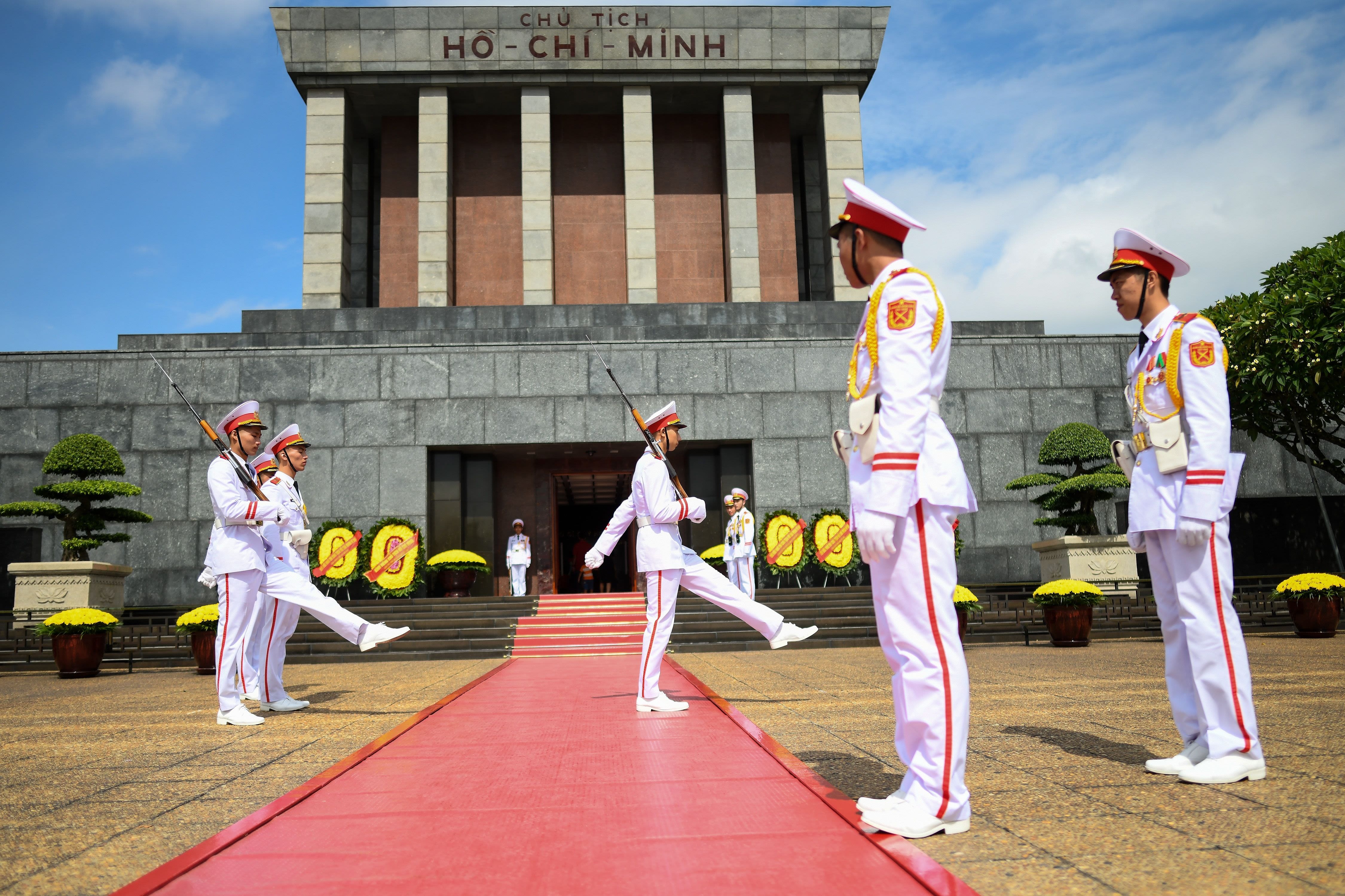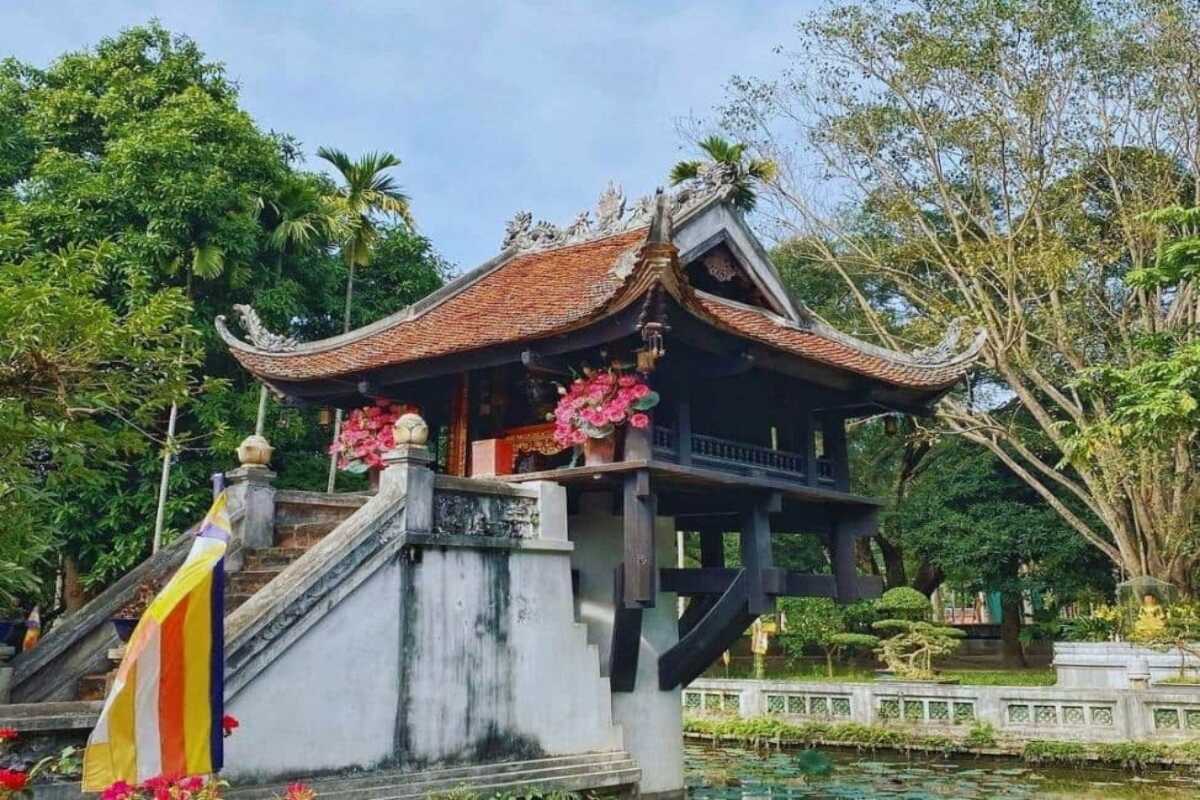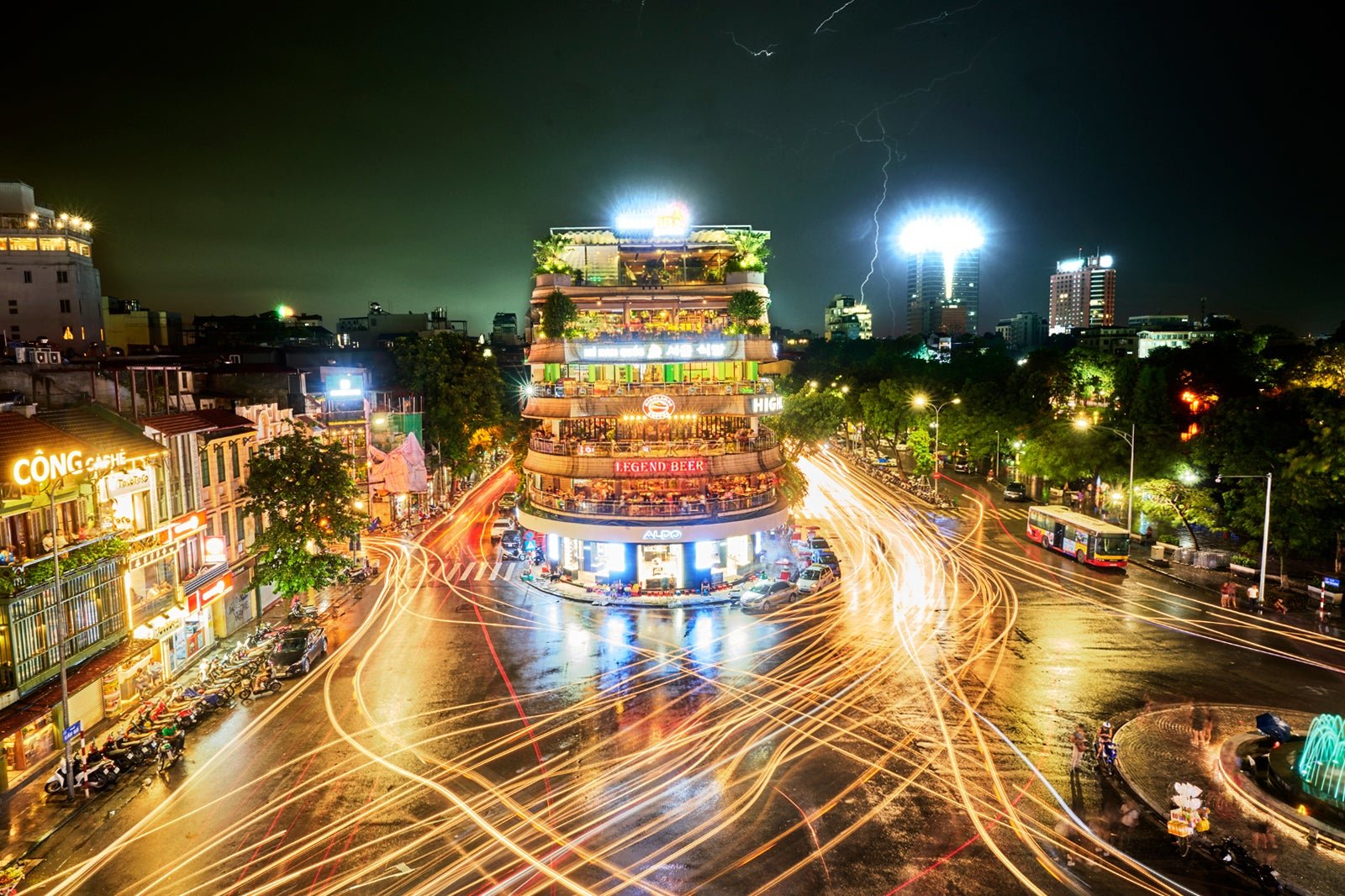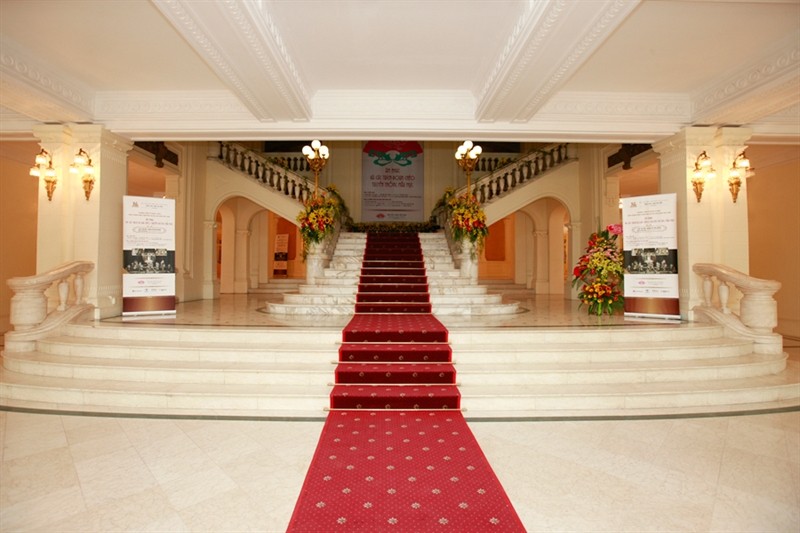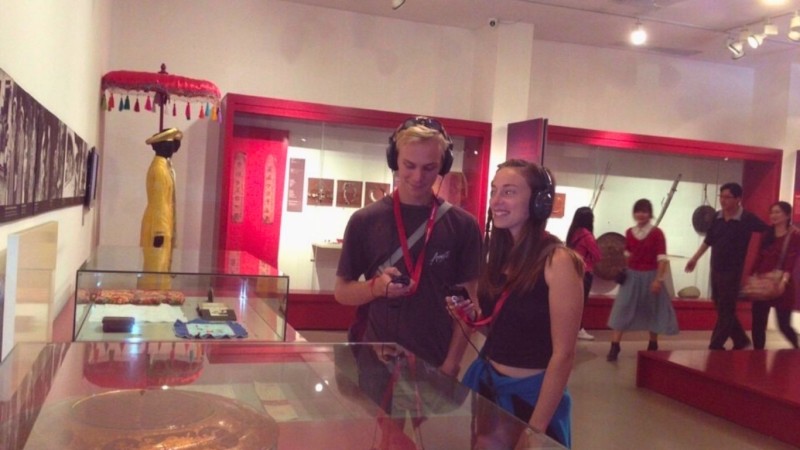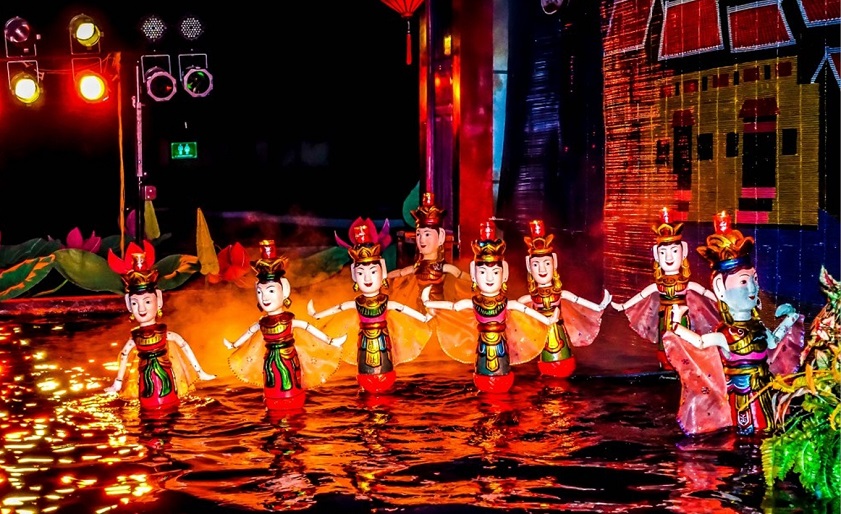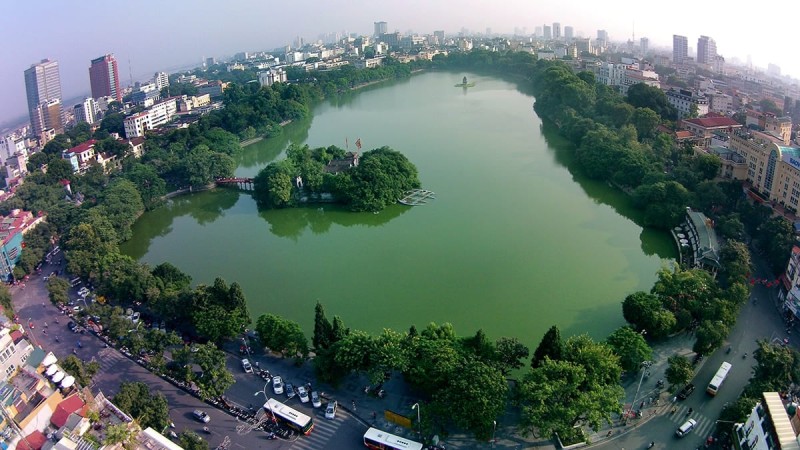Temple of Literature Hanoi: Complete Travel Guide, Tips & Things To Do
The Temple of Literature Hanoi is Vietnam’s first national university, offering visitors a glimpse into the country’s rich Confucian heritage. It features traditional architecture, serene gardens, and historic stone stelae honoring ancient scholars. The site provides a unique cultural experience in the heart of Hanoi.
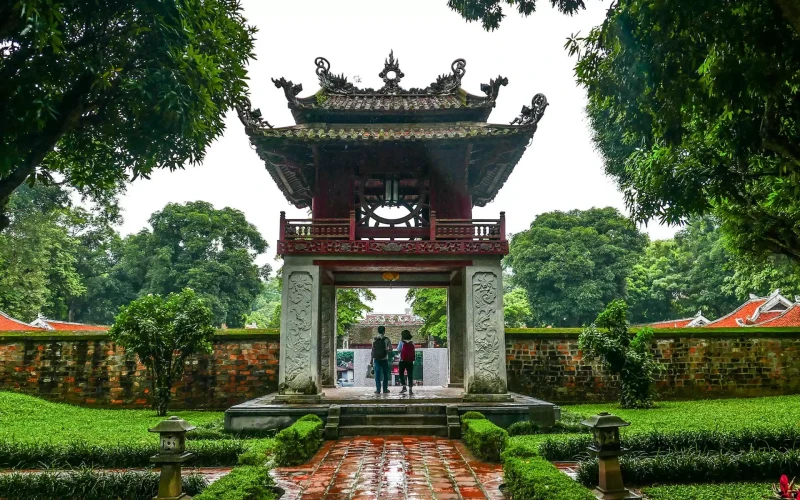
Introduction to the Temple of Literature
The Temple of Literature Hanoi stands as a remarkable symbol of Vietnam’s rich cultural heritage and educational history. Established in 1070 during the Ly Dynasty, it served as the nation’s first university, known as Quốc Tử Giám. This site offers visitors a unique glimpse into ancient Vietnamese Confucianism, traditional architecture, and the enduring legacy of scholarly pursuit. Explore the serene five courtyards, historic stone stelae, and beautifully preserved structures that celebrate Vietnam’s identity as a heritage site.
Discover the fascinating origins and cultural significance that make the Temple of Literature Hanoi a must-visit destination in Hanoi. Plan your visit to immerse yourself in this exceptional blend of history, philosophy, and architectural beauty.
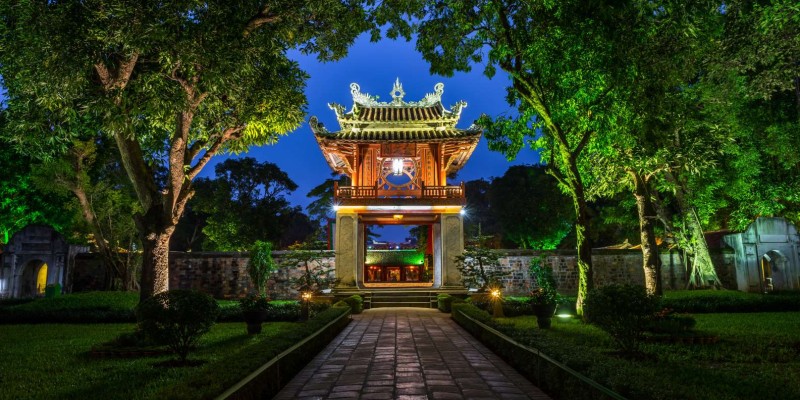
Historical Significance and Origins
The Temple of Literature Hanoi was established during the Ly Dynasty in 1070, marking a pivotal moment in Vietnamese history as the home of the first national university, Quốc Tử Giám. It played a central role in educating the country’s elite scholars and promoting Confucian values, which deeply influenced Vietnamese culture and governance for centuries.
The temple’s founding reflected the dynasty’s commitment to education and the Confucian ideal of meritocracy. Over time, it became a revered institution where generations of scholars were trained, contributing to Vietnam’s intellectual and cultural development. Its legacy continues today as a symbol of Vietnam’s academic heritage and national pride.
Plan your visit to the Temple of Literature Hanoi to connect with this profound historical background and understand its lasting influence on Vietnamese education.
Establishment during the Ly Dynasty in 1070
The founding of the Temple of Literature Hanoi in 1070 marked the beginning of a formalized education system under the Ly Dynasty. This royal patronage laid the groundwork for Vietnam’s first national university, emphasizing Confucian teachings and scholarly excellence.
- Royal Foundation: Established by Emperor Ly Thanh Tong to promote Confucian learning and governance.
- Educational Vision: Served as a center for training mandarins and scholars in classical literature and philosophy.
- Historical Context: Reflected the influence of Chinese Confucian traditions adapted to Vietnamese culture.
These elements showcase the temple’s significance as a cornerstone of Vietnam’s intellectual history. Planning your visit offers a direct connection to this rich past.
Role as Vietnam’s First National University (Quốc Tử Giám)
As Quốc Tử Giám, the Temple of Literature Hanoi functioned as Vietnam’s premier educational institution. It educated the brightest minds and future leaders, ensuring the spread of Confucian ideals throughout the country.
- Academic Legacy: Trained scholars who passed rigorous imperial exams to enter civil service.
- National Influence: Became a symbol of Vietnam’s commitment to knowledge and governance.
- Cultural Preservation: Maintained Confucian educational practices unique to Vietnam.
Understanding this legacy enriches your visit to the temple and highlights its importance beyond architecture.
Influence of Confucianism on Vietnamese Culture and Education
Confucianism deeply shaped the philosophy and educational principles at the Temple of Literature Hanoi. Its teachings on morality, social order, and respect influenced Vietnam’s cultural identity and academic traditions for centuries.
- Ethical Foundations: Promoted values such as filial piety, loyalty, and integrity.
- Educational System: Structured curriculum around Confucian classics and examinations.
- Cultural Identity: Embodied Vietnam’s intellectual and spiritual heritage.
Experiencing the temple allows you to witness the enduring influence of Confucianism in Vietnamese society.
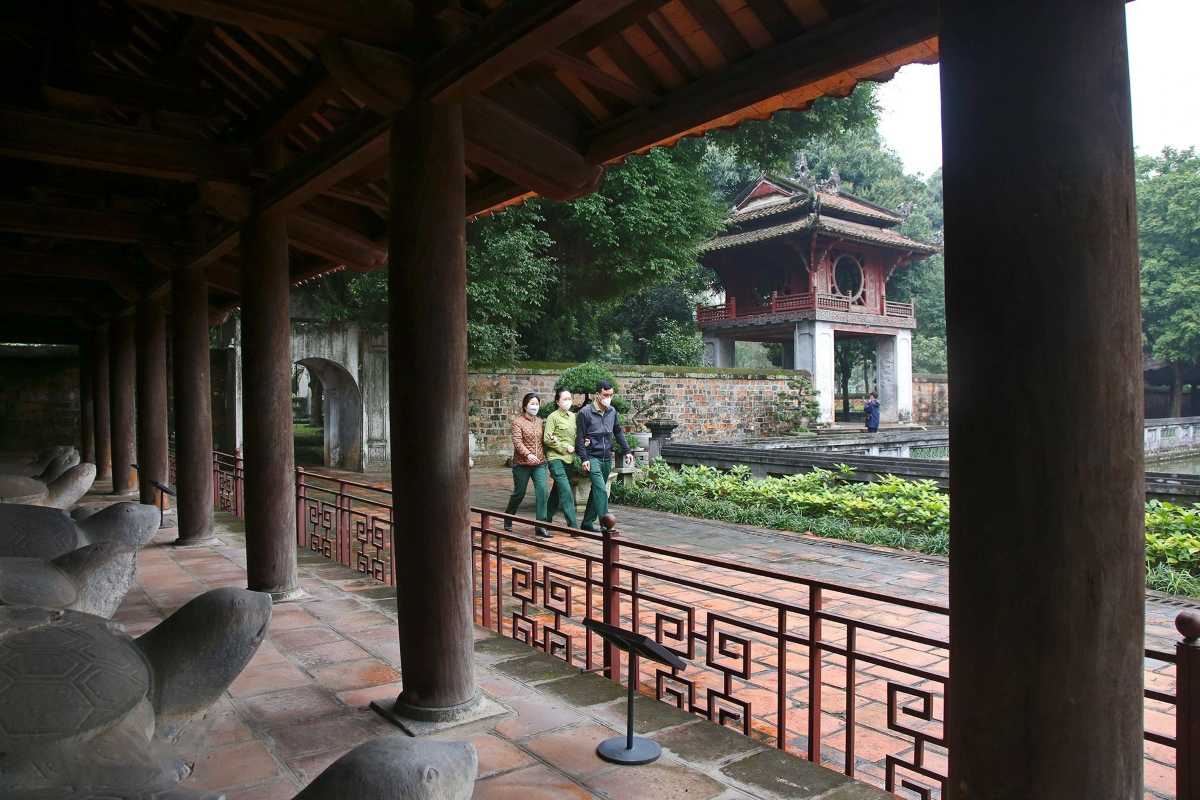
Architectural Overview
The Temple of Literature Hanoi is renowned for its distinctive layout featuring the five courtyards temple of literature hanoi, which guide visitors through centuries of Vietnamese architectural and cultural history. This temple combines traditional Vietnamese design with Confucian symbolism, offering a structured yet serene environment. Key architectural elements include the imposing gateways, the Well of Heavenly Clarity, and the Pavilion of the Constellation of Literature, each adding unique historical and aesthetic value. Visitors can also admire the stone stelae of doctoral graduates that stand as a testament to the scholarly achievements honored here.
Exploring these architectural highlights helps you appreciate how the temple embodies Vietnam’s cultural and educational heritage. Plan your visit to witness the harmonious blend of design and tradition at the Temple of Literature Hanoi.
Layout of the Five Courtyards
This section breaks down the temple’s spatial organization into five distinct courtyards that visitors experience sequentially.
- First Courtyard: Entrance area welcoming guests and setting a solemn tone.
- Second Courtyard: Features the Well of Heavenly Clarity and Stelae Pavilion, central to the temple’s scholarly heritage.
- Third Courtyard: Houses worship halls and statues honoring Confucius and Vietnamese scholars.
- Fourth Courtyard: Contains tranquil gardens for reflection and study.
- Fifth Courtyard: Dedicated to historical study areas and traditional learning environments.
Together, these courtyards create a thoughtful layout that blends education, spirituality, and nature seamlessly.
Experience the unique courtyard layout when you visit the Temple of Literature Hanoi to understand its architectural brilliance.
Key Structures: Gateways, Well of Heavenly Clarity, Pavilion of the Constellation of Literature
This part highlights the temple’s most iconic architectural features:
- Gateways: Grand entrances that symbolize passage into a sacred scholarly space.
- Well of Heavenly Clarity: A historically significant water feature symbolizing purity and wisdom.
- Pavilion of the Constellation of Literature: Celebrated for its intricate design and connection to celestial learning.
These structures reflect the temple’s reverence for knowledge and Confucian ideals.
Discover these landmarks during your visit to the Temple of Literature Hanoi and appreciate their historical importance.
The Stone Stelae of Doctoral Graduates
The temple houses an impressive collection of stone stelae of doctoral graduates that record the names of scholars who passed imperial exams.
- Historic Records: Over 80 stelae inscribed with nearly 1,300 names from the imperial examinations.
- Cultural Significance: Represent the temple’s role in honoring academic excellence and Confucian scholarship.
- Preservation Efforts: Careful conservation maintains these ancient artifacts for visitors and researchers.
The stone stelae offer a tangible connection to Vietnam’s educational traditions at the Temple of Literature Hanoi.
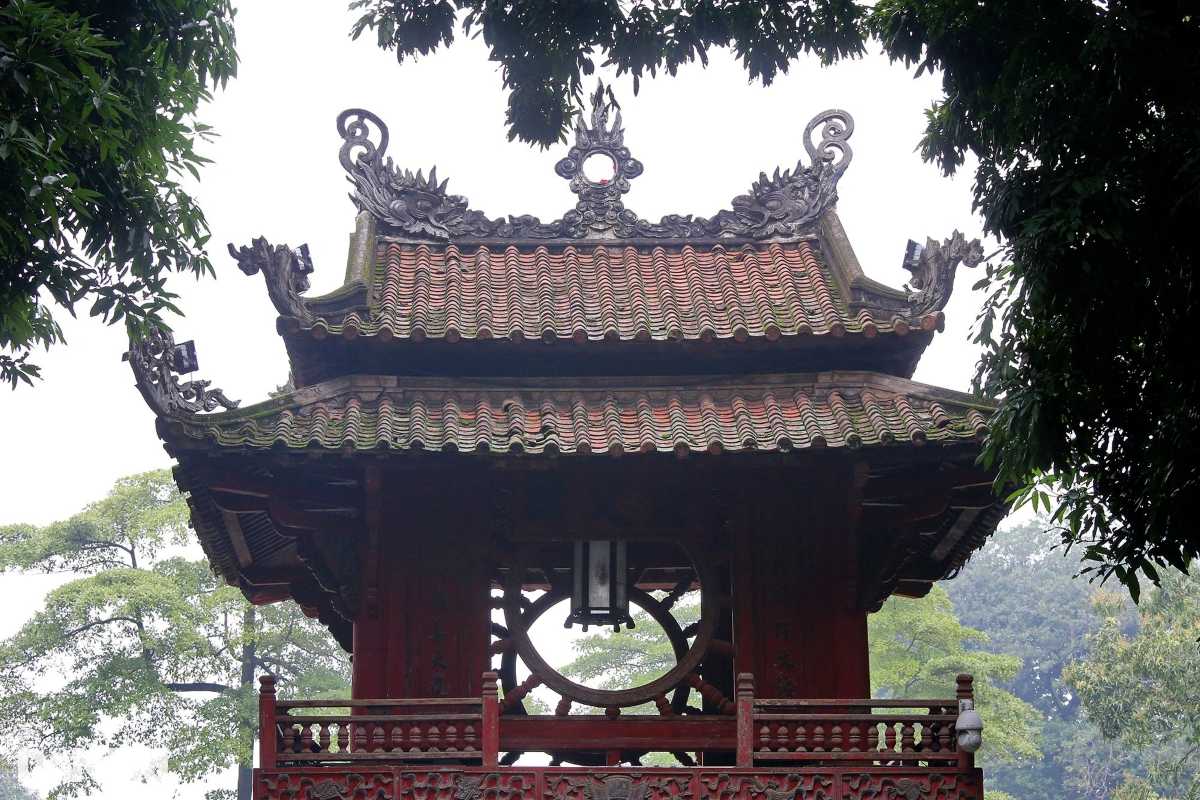
Cultural and Symbolic Importance
The Temple of Literature Hanoi embodies profound cultural and philosophical significance rooted in traditional Confucian values. It represents more than just an architectural marvel; it stands as a living symbol of Vietnam’s identity and its longstanding respect for education, morality, and social harmony. This heritage site continues to inspire Vietnamese people and visitors alike by reflecting ideals that shape the nation’s cultural fabric and spiritual life. Understanding this symbolism enriches your appreciation of the temple and connects you to a deeper cultural legacy.
Immerse yourself in the thoughtful design and rich symbolism at the Temple of Literature Hanoi as you explore its historical grounds.
Confucian Values Represented
Confucianism forms the philosophical foundation of the Temple of Literature Hanoi, influencing its design and purpose.
- Moral Principles: Emphasizes respect, filial piety, and social order.
- Educational Ideals: Highlights the pursuit of knowledge and scholarly excellence.
- Architectural Symbolism: Reflects harmony, balance, and reverence for tradition.
These elements showcase how the temple is a physical manifestation of Confucian thought in Vietnamese culture.
Connect with the essence of Confucianism during your visit to the Temple of Literature Hanoi.
The Temple’s Role in Modern Vietnamese Identity
The Temple of Literature Hanoi continues to play a vital role in shaping Vietnamese identity by preserving cultural heritage and educating new generations about their history. It acts as a bridge linking ancient traditions with contemporary values, reminding visitors of the enduring influence of education and morality in society.
- Cultural Continuity: Sustains respect for learning and ethics across centuries.
- National Pride: Symbolizes Vietnam’s rich scholarly tradition.
- Living Heritage: Hosts ceremonies and cultural activities reinforcing identity.
Experience this living cultural connection as you explore the temple’s grounds.
Recognition as a Heritage Site
Officially designated as a protected heritage site, the Temple of Literature Hanoi benefits from ongoing preservation efforts to maintain its historical integrity and cultural significance. This status ensures that the temple remains a treasured landmark for future generations and highlights its importance on both a national and global scale.
- Legal Protection: Safeguards the temple’s architecture and artifacts.
- Conservation Efforts: Supports restoration and educational programs.
- Cultural Preservation: Promotes awareness of Vietnam’s historical legacy.
Visiting this recognized heritage site offers insight into Vietnam’s dedication to preserving its cultural treasures.
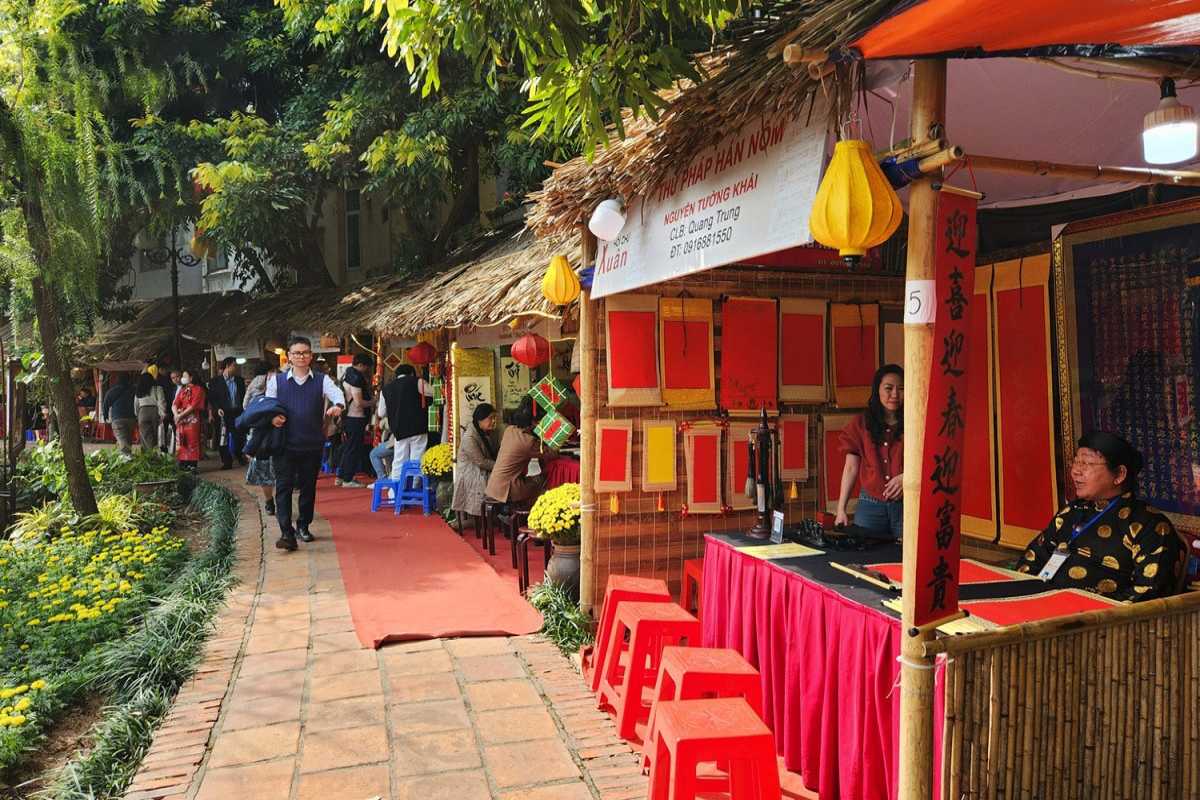
Planning Your Visit
Plan your trip to the Temple of Literature Hanoi with ease by understanding its location, access options, opening hours, and visitor facilities. This section provides practical details to help you prepare for a smooth and enjoyable visit. Whether you’re navigating from the bustling Old Quarter or seeking the best times to explore, this guide ensures you are well-informed for your journey.
Make the most of your visit to the Temple of Literature Hanoi by following these essential planning tips.

Location and How to Get There
The Temple of Literature Hanoi is located in Van Mieu Ward, Dong Da District, offering easy access from central Hanoi. To reach this historic site, consider several transport options tailored to your preferences and schedule.
- By Public Transport: Numerous buses stop near the temple, including the Quoc Tu Giam Bus Stop, providing affordable and convenient routes.
- By Taxi or Ride-Hailing: Taxis and apps like Grab offer direct and flexible travel, especially if you prefer comfort and speed.
- Walking: From the Old Quarter, a pleasant 20-minute walk lets you enjoy local sights en route.
Navigating to the Temple of Literature Hanoi is straightforward, with clear signage and well-known landmarks to guide you.
Plan your route carefully to ensure a hassle-free start to your visit.
Official Address and Geographic Context in Hanoi
The Temple of Literature Hanoi is officially located at:
- 58 Quoc Tu Giam Street: The main entrance address for visitors.
- Van Mieu Ward: The administrative ward hosting the temple.
- Dong Da District: A central district in Hanoi encompassing the temple grounds.
- Hanoi City: The capital city providing broader geographic context.
This central location places the temple within easy reach of major urban hubs and tourist areas.
Confirm this address before your trip to plan your travel effectively.
Transportation Options: Public Bus, Taxi, Walking from Old Quarter
You have multiple transportation options to reach the temple:
- Public Bus: Routes servicing the Quoc Tu Giam Bus Stop run frequently with affordable fares.
- Taxi: Readily available across Hanoi; expected travel time varies by traffic.
- Walking: From the Old Quarter, a 20-minute walk allows you to experience local street life.
Each option suits different needs—choose based on convenience, budget, and time.
Prepare your route in advance to enjoy a stress-free journey.
Nearby Landmarks and Accessibility Tips
The temple is surrounded by well-known landmarks aiding orientation:
- Hoan Kiem Lake: A scenic spot just east of the temple, popular with locals and tourists.
- Old Quarter: Bustling market and street food area nearby, ideal for combining visits.
- Quoc Tu Giam Bus Stop: Key public transport point close to the temple entrance.
- Accessibility: The temple grounds are mostly flat and walkable, suitable for most visitors.
Use these landmarks to navigate confidently during your visit.
Enhance your experience by exploring the vibrant surroundings.
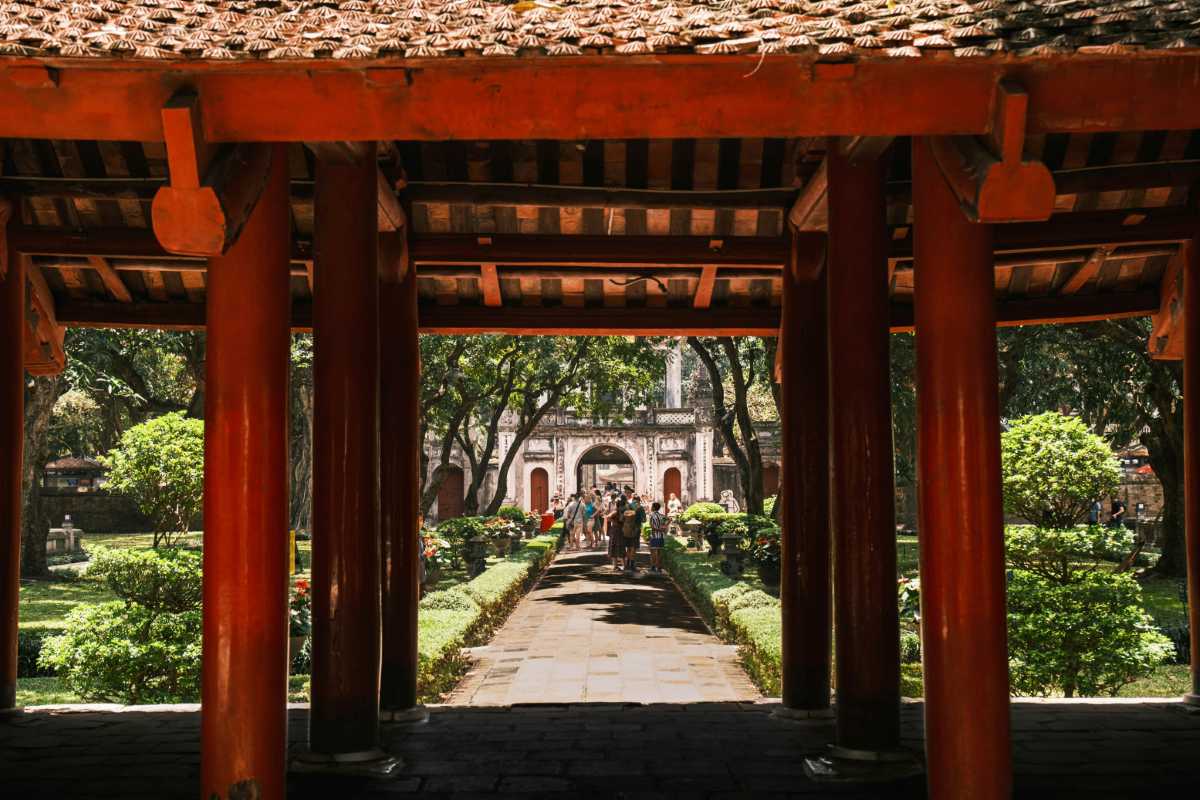
Opening Hours and Ticket Information
Knowing the Temple of Literature Hanoi opening hours and ticket information is essential for planning your visit. The temple welcomes guests daily, with clear entry guidelines and affordable fees. Understanding the schedule and costs helps you choose the best time to explore this cultural landmark.
Ensure your visit aligns with the temple’s hours and ticket requirements to enjoy a smooth experience.
Daily Opening and Closing Times
The temple is open every day, providing consistent access for visitors:
- Opening Hours: 8:00 AM to 5:00 PM daily.
- Last Entry: Usually 30 minutes before closing to allow adequate visit time.
- Holidays: Open on most public holidays but may have adjusted hours.
Plan your visit within these times for full access to the grounds.
Entrance Fees and Discounts
Admission fees are modest, with options to suit different visitors:
- Standard Ticket: Approximately 70,000 VND for adults.
- Discounts: Reduced prices for students, seniors, and groups with valid ID.
- Free Entry: Children under a certain age or local residents on specific days may enter free.
Check the official ticket counter or website for current pricing and eligibility.
Best Times and Seasons to Visit for Comfort and Crowd Avoidance
To maximize your experience, consider these tips:
- Best Seasons: Visit during spring (March–April) or autumn (September–November) for pleasant weather.
- Time of Day: Early mornings are less crowded and cooler.
- Weekdays: Avoid weekends and public holidays for a quieter visit.
These recommendations help you enjoy the temple’s peaceful atmosphere fully.
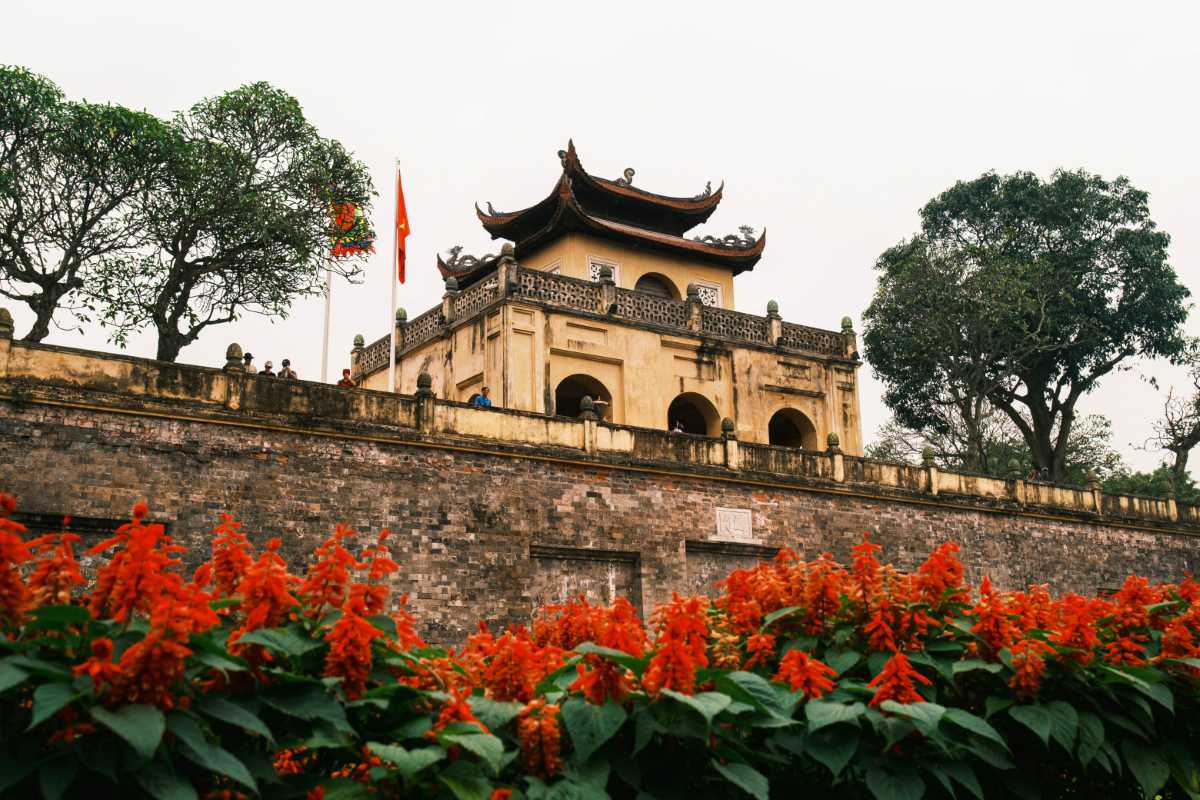
Visitor Facilities and Accessibility
To ensure your visit to the Temple of Literature Hanoi is comfortable and accessible, it’s important to be aware of the onsite facilities and accessibility options available. The temple provides various amenities designed to enhance visitor convenience while respecting the site’s cultural significance. Understanding these details helps you prepare for a smooth and respectful experience.
Make your visit more enjoyable by knowing what facilities and accessibility options are in place at the Temple of Literature Hanoi.
Onsite Amenities: Restrooms, Seating Areas, Visitor Information
Visitors to the Temple of Literature Hanoi can expect several convenience facilities to support their visit:
- Restrooms: Clean and well-maintained public toilets are available near the main entrance.
- Seating Areas: Benches and shaded spots are scattered throughout the temple grounds for rest and contemplation.
- Visitor Information: Information desks provide maps, brochures, and assistance in multiple languages.
These amenities ensure a comfortable and informed visit for all guests.
Enhance your visit by utilizing these facilities to stay refreshed and well-guided.
Accessibility for Disabled Visitors
The Temple of Literature Hanoi offers provisions to accommodate disabled visitors, though some areas may present challenges due to historic structures.
Wheelchair access is available at the main entrance and several pathways, making the site largely navigable for visitors with mobility needs. However, certain courtyards with stone steps or uneven terrain may require assistance. Staff members are generally helpful in providing support when needed.
Confirming accessibility options before your visit helps ensure a pleasant experience at the Temple of Literature Hanoi.
Rules and Etiquette for Visitors
Respectful behavior is essential when visiting the Temple of Literature Hanoi to preserve its cultural and spiritual atmosphere. Key guidelines include:
- Dress Modestly: Wear appropriate clothing that covers shoulders and knees.
- Speak Softly: Maintain a quiet demeanor to respect worshippers and other visitors.
- Photography: Follow posted rules; avoid flash photography in sacred areas.
- No Smoking or Eating: These activities are prohibited inside the temple grounds.
- Remove Shoes: In designated worship areas, removing shoes is customary.
Following these etiquette tips ensures a respectful and enriching visit.
Plan your visit with these cultural considerations in mind to honor the temple’s traditions.
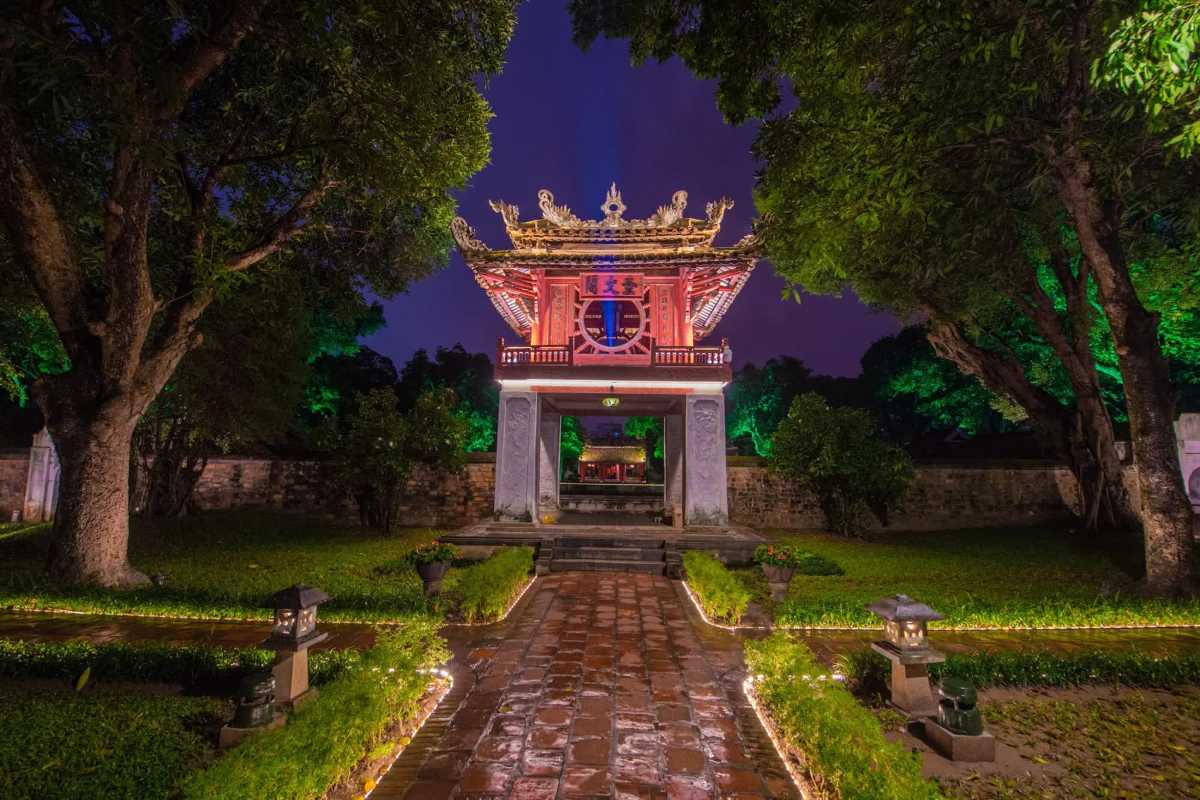
Exploring the Temple Grounds
The Temple of Literature Hanoi invites you to explore its beautifully preserved grounds, where history and culture merge in an inspiring setting. The temple’s layout is centered around five courtyards temple of literature hanoi, each with unique architectural and cultural significance. Visitors can admire traditional Vietnamese architecture, intricate cultural artifacts, and serene gardens that reflect the scholarly tradition of Vietnam. Whether you join guided tours temple of literature hanoi or opt for self-guided tours temple of literature, this experience offers deep insight into the country’s heritage.
Discover the rich cultural heritage and historical landmarks embedded within the temple’s grounds during your visit to the Temple of Literature Hanoi.
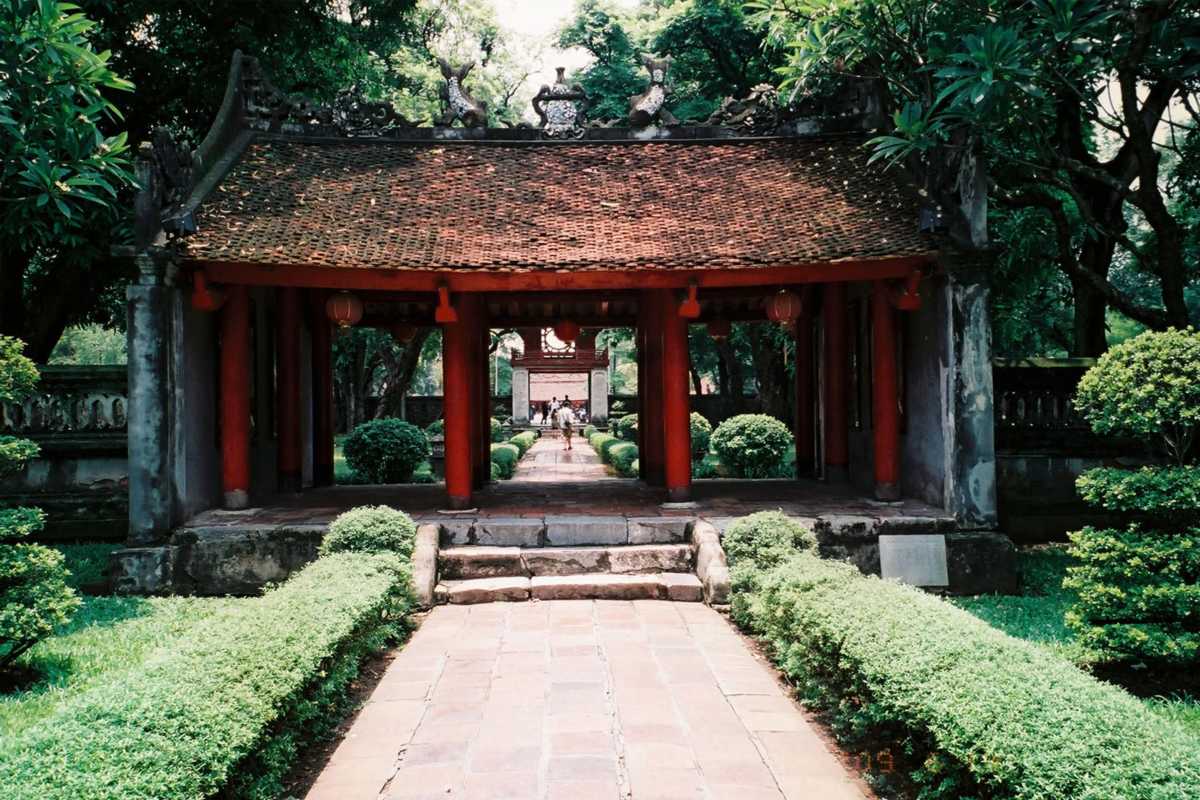
The Five Courtyards: Layout and Highlights
The Temple of Literature Hanoi is arranged through a series of five courtyards temple of literature hanoi, each designed to represent different facets of Vietnamese scholarly and spiritual life. Understanding this layout helps you appreciate the architectural design and cultural depth of the site.
- First Courtyard: The entrance courtyard welcomes visitors and introduces the temple’s historical significance.
- Second Courtyard: Houses the Well of Heavenly Clarity and the Stelae Pavilion, where stone stelae of doctoral graduates are displayed.
- Third Courtyard: Contains worship halls and religious statues central to spiritual practices.
- Fourth and Fifth Courtyards: Feature peaceful gardens and study areas designed for reflection and academic pursuits.
This spatial arrangement creates a thoughtful journey through Vietnam’s scholarly tradition and cultural heritage.
Experience the harmony of design and history as you explore the Temple of Literature Hanoi.
First Courtyard: Entrance and Historical Background
The first courtyard serves as the grand entry point into the Temple of Literature Hanoi, welcoming guests with a solemn atmosphere and rich history.
This area historically functioned as the gate to a sacred space dedicated to learning and respect for Confucian principles.
Visualize the temple entrance, framed by ancient walls and traditional Vietnamese architecture, as you begin your journey through this historic site.
Second Courtyard: Well of Heavenly Clarity and Stelae Pavilion
The second courtyard features two of the temple’s most important landmarks:
- Well of Heavenly Clarity: A symbolic water feature representing purity and wisdom within Confucian teachings.
- Stelae Pavilion: Houses the stone stelae of doctoral graduates, engraved with the names of scholars who passed imperial examinations.
This courtyard stands as a testament to the temple’s role in honoring academic achievement and spiritual values.
Plan to spend time here to absorb the deep historical and cultural meaning.
Third Courtyard: Worship Halls and Statues
The third courtyard is dedicated to spiritual worship and houses several halls and statues.
Visitors can observe religious ceremonies and appreciate statues honoring Confucian scholars and Vietnamese spiritual figures.
This area reflects the reflective and sacred nature of the temple as a place of learning and reverence.
Fourth and Fifth Courtyards: Gardens and Study Areas
The fourth and fifth courtyards offer peaceful garden spaces and historic study areas where scholars once contemplated and studied.
- Temple Gardens: Lush greenery and ancient trees create a serene environment for reflection.
- Study Areas: Traditional spaces preserved to honor Vietnam’s academic past.
These courtyards provide a calm retreat within the bustling city, allowing visitors to connect with the temple’s scholarly spirit.
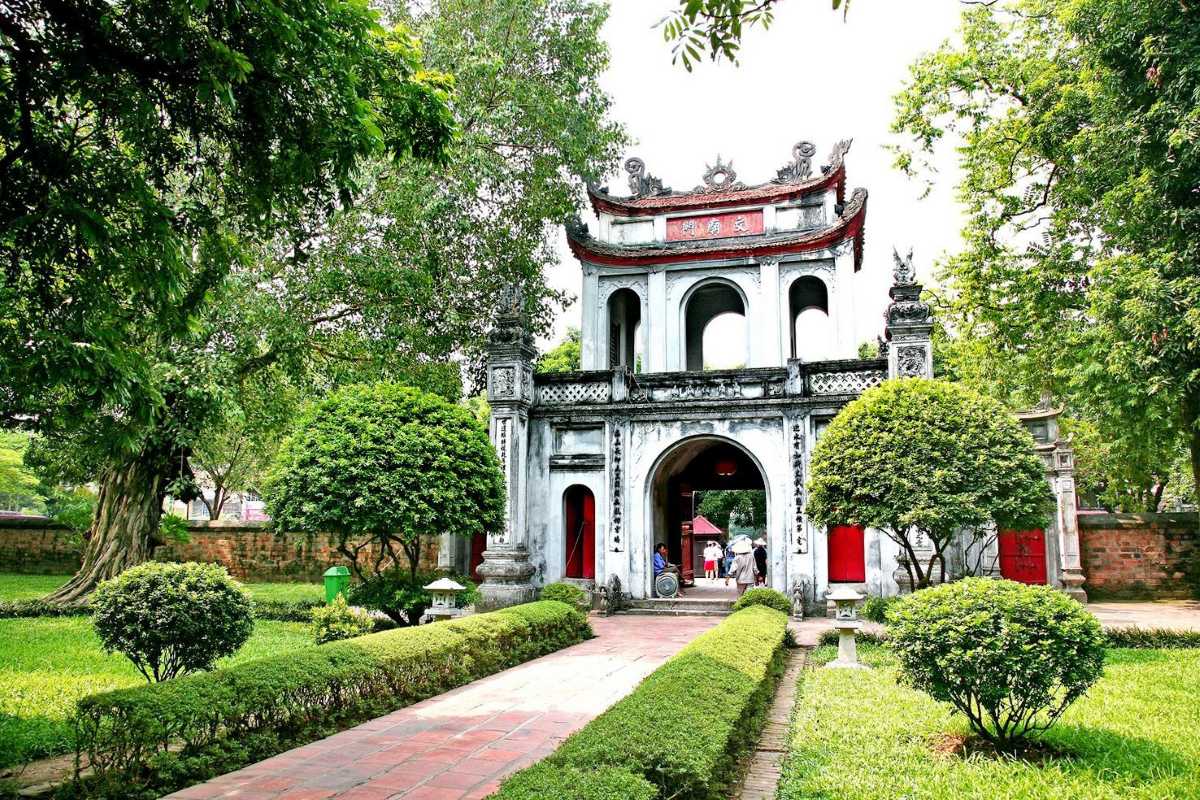
Notable Features and Artifacts
The Temple of Literature Hanoi houses many unique cultural artifacts and architectural details that reflect its historical and spiritual importance. Among the most remarkable treasures are the stone stelae of doctoral graduates, traditional Vietnamese architecture throughout the complex, and the ancient trees and gardens that lend the site its peaceful atmosphere. These elements collectively tell a story of Vietnam’s rich scholarly and cultural traditions.
Explore these treasures to gain a deeper appreciation of the temple’s role as a guardian of history and culture.
Stone Stelae Engraved with Scholars’ Names
The temple’s stone stelae of doctoral graduates are engraved with the names and achievements of scholars who passed rigorous imperial examinations. These stelae serve as both historical records and symbols of academic excellence.
They stand as a testament to centuries of dedication to education and the Confucian values that shaped Vietnamese society. Visitors can observe the intricate inscriptions that honor the intellectual legacy preserved at the Temple of Literature Hanoi.
Traditional Vietnamese Architecture Details
The architectural style of the Temple of Literature Hanoi showcases classic traditional Vietnamese architecture characterized by elegant wooden structures, curved rooflines, and intricate carvings.
These design elements symbolize harmony with nature and the Confucian ideals of balance and order. The temple’s layout and details emphasize craftsmanship and cultural expression, inviting visitors to admire the artistry that has withstood the test of time.
Ancient Trees and Gardens
Surrounding the temple are ancient trees and meticulously maintained gardens that provide a tranquil retreat from the city’s bustle.
These natural features not only enhance the temple’s beauty but also create a contemplative space where visitors can reflect and connect with the environment. The gardens embody the traditional Vietnamese reverence for nature and harmony.
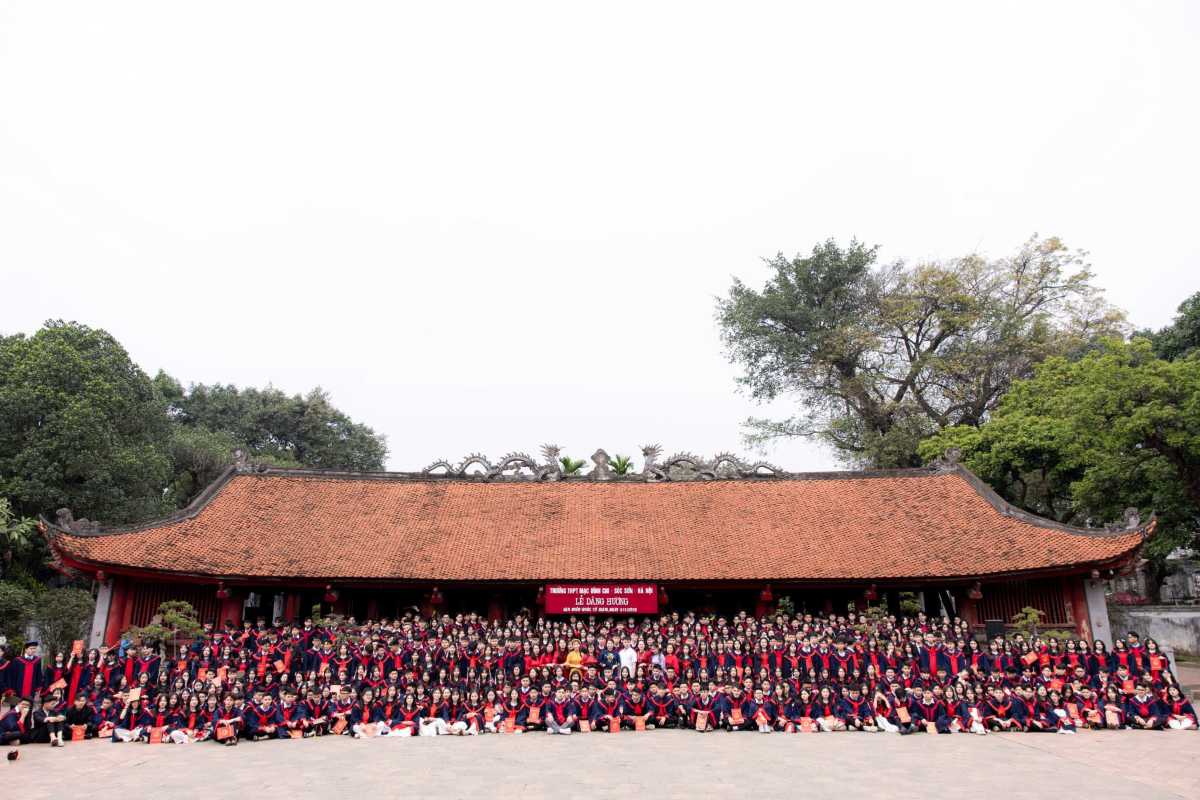
Guided Tours and Self-Guided Exploration
Visitors to the Temple of Literature Hanoi can choose between guided tours temple of literature hanoi and self-guided tours temple of literature, each offering unique benefits depending on your preferences and pace. Understanding these options helps you select the best way to experience the temple’s rich history and cultural treasures.
- Guided Tours: Led by professional guides, these tours offer in-depth explanations and stories that bring the temple’s history to life.
- Self-Guided Tours: Allow you to explore at your own pace using maps or audio guides, perfect for independent travelers.
Consider your interests, time constraints, and preferred style to decide which tour option fits you best.
Plan your visit with a guided or self-guided tour to fully appreciate the Temple of Literature Hanoi.
Options for Professional Guides and Audio Guides
Several guided service options are available to enhance your temple experience:
- Professional Guides: Certified local experts provide rich historical context and cultural insights.
- Audio Guides: Convenient devices offer narrated tours in multiple languages for flexible exploration.
- Group Tours: Organized groups allow social interaction and shared learning experiences.
Selecting the right guide option helps deepen your understanding of the temple’s significance.
Trust in professional guides or use audio tours to make your visit to the Temple of Literature Hanoi informative and engaging.
Recommended Routes and Time Allocation
To maximize your visit, consider the following itinerary suggestions:
- Start at the First Courtyard and proceed sequentially through the five courtyards temple of literature hanoi.
- Allocate approximately 1.5 to 2 hours to explore the entire site comfortably.
- Spend extra time at key landmarks such as the Well of Heavenly Clarity and Stelae Pavilion.
- Allow moments for quiet reflection in the garden courtyards.
Following these routes ensures a thorough and enjoyable visit.
Plan your route and timing to experience the full depth of the Temple of Literature Hanoi.
Tips for Photography and Quiet Reflection
Enhance your visit with these helpful tips:
- Photography Tips: Capture the temple’s intricate details during soft morning light or late afternoon for optimal photos.
- Quiet Spots: Seek out garden courtyards for peaceful moments away from crowds.
- Respectful Photography: Avoid flash in sacred areas and respect visitor privacy.
These suggestions help you appreciate both the visual beauty and spiritual atmosphere of the temple.
Use these tips to make your visit to the Temple of Literature Hanoi both memorable and respectful.
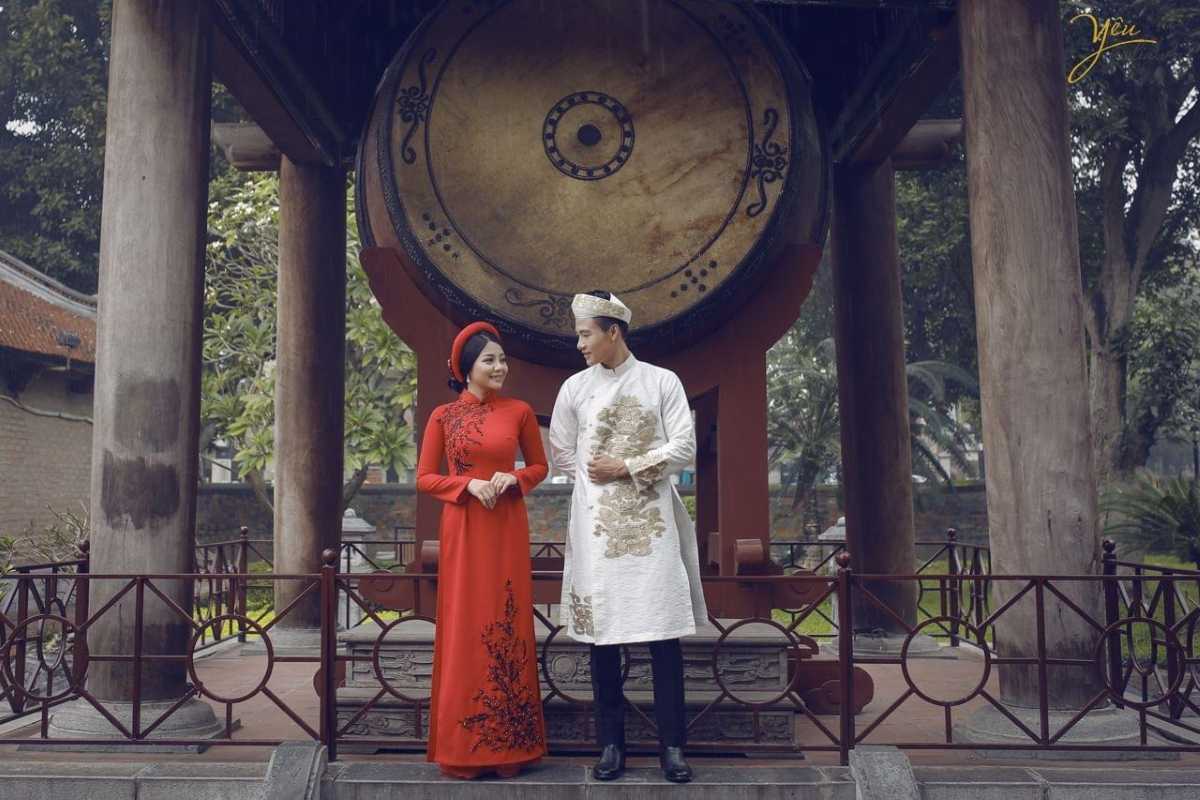
Activities and Experiences at the Temple
The Temple of Literature Hanoi offers a rich variety of cultural activities and unique experiences that bring Vietnam’s heritage to life. Visitors can participate in traditional calligraphy workshops, enjoy vibrant seasonal festivals, and attend ceremonies honoring Confucius and Vietnamese scholarly traditions. These events provide immersive opportunities to connect with the temple’s history and Vietnamese cultural arts.
Engage fully with the cultural heritage by joining these activities during your visit to the Temple of Literature Hanoi.
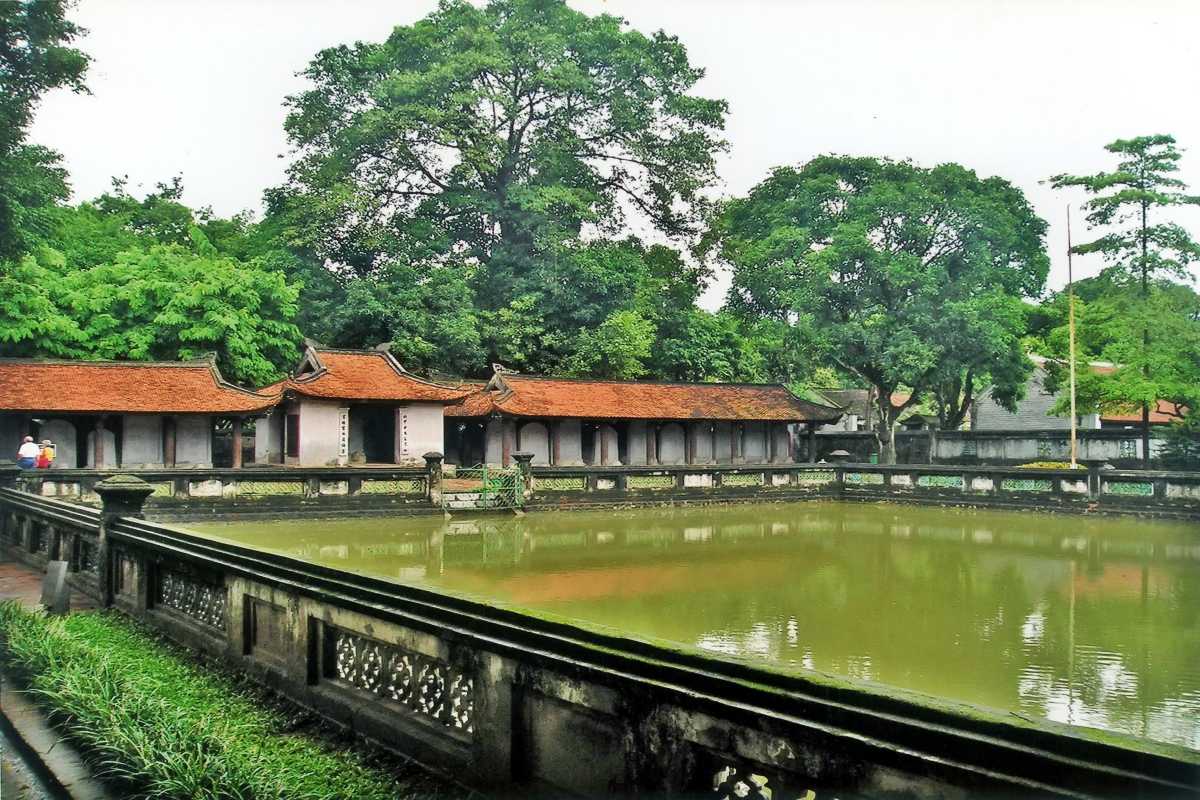
Cultural Workshops and Calligraphy Sessions
Traditional calligraphy workshops at the Temple of Literature Hanoi invite you to experience one of Vietnam’s cherished art forms firsthand. Participating in these sessions offers a hands-on understanding of Vietnamese calligraphy’s cultural significance.
- Workshop Format: Learn brush techniques and characters under expert guidance.
- Cultural Context: Discover how calligraphy reflects Vietnamese philosophy and aesthetics.
- Participation Details: Sessions are open to visitors of all skill levels and typically last 30–60 minutes.
These workshops provide a meaningful way to immerse yourself in Vietnamese traditional arts.
Join a traditional calligraphy workshop to deepen your cultural experience at the Temple of Literature Hanoi.
Participating in Traditional Vietnamese Calligraphy
Joining a calligraphy session at the temple offers both learning and cultural immersion:
- Expert Instruction: Skilled artists guide participants in writing Vietnamese characters using traditional brushes.
- Hands-On Practice: Visitors try their hand at creating meaningful calligraphy art.
- Cultural Insight: Sessions include explanations of calligraphy’s role in Vietnamese history and celebrations.
This experience allows visitors to connect personally with Vietnam’s artistic heritage.
Plan your visit to include a calligraphy session for an unforgettable cultural activity.
Seasonal Cultural Events and Performances
The temple hosts several seasonal cultural events that celebrate Vietnam’s traditions and festivals:
- Tet Festival: Marking the Lunar New Year, with special ceremonies and performances.
- Confucius Commemoration Ceremonies: Honoring the great philosopher with rituals and cultural displays.
- Mid-Autumn Festival: Featuring lantern displays, traditional music, and family-oriented activities.
These events showcase vibrant Vietnamese cultural performances and offer visitors a festive atmosphere.
Experience the lively cultural events at the Temple of Literature Hanoi by planning your visit around these special occasions.
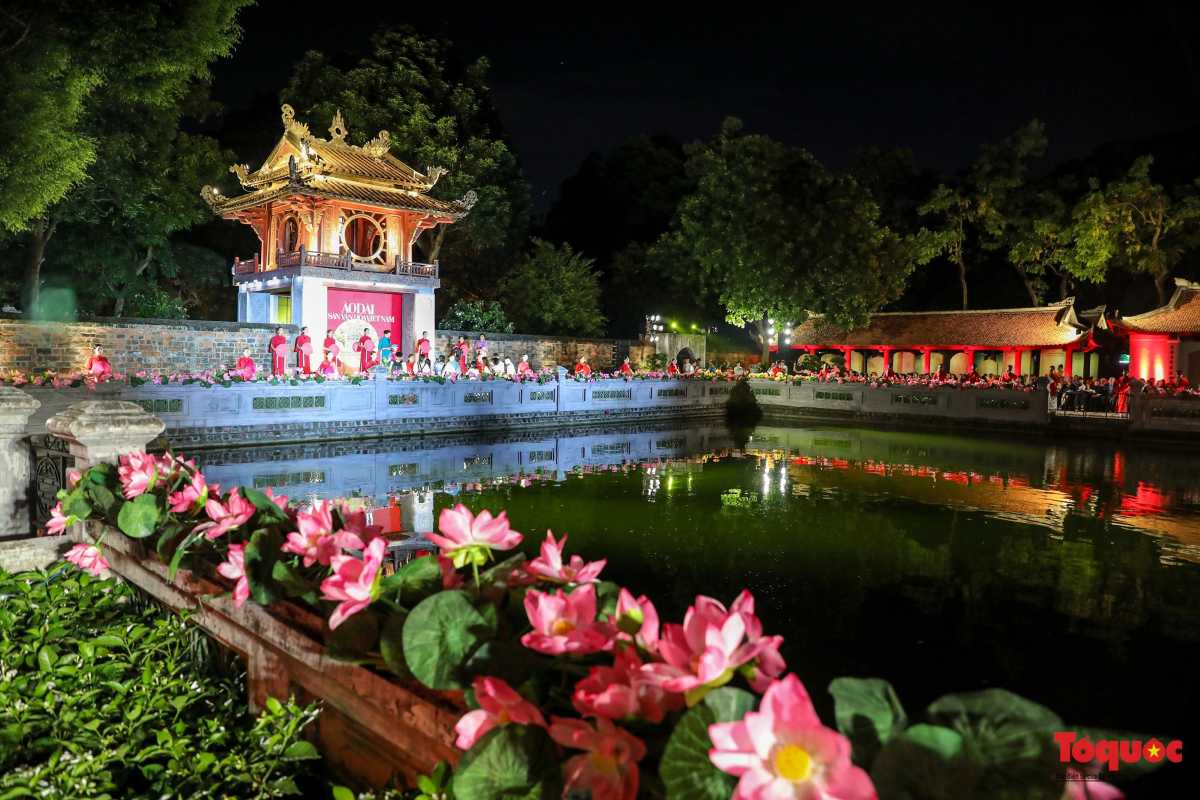
Educational Exhibitions and Displays
The Temple of Literature Hanoi offers a variety of educational exhibits and displays that deepen visitors’ understanding of Vietnam’s scholarly traditions and Confucian heritage. These thoughtfully curated exhibitions provide rich historical context and highlight the temple’s role in academic history.
- Exhibits on Confucianism: Present philosophical foundations and cultural impact.
- Vietnam Academic History Exhibitions: Showcase the evolution of education and royal examinations.
- Special Educational Programs: Include temporary displays and interactive learning opportunities.
These educational offerings enrich your visit by connecting you more deeply with Vietnam’s intellectual legacy.
Explore the educational displays to gain a fuller appreciation of the Temple of Literature Hanoi.
Exhibits on Confucianism and Vietnam’s Academic History
The core exhibitions focus on Confucianism and its profound influence on Vietnam’s academic and cultural development.
Visitors will find:
- Detailed displays on Confucian philosophy and values.
- Artifacts related to royal examinations that shaped the country’s leadership.
- Historical records showcasing the temple’s educational role over centuries.
These exhibits provide clear insight into Vietnam’s scholarly tradition and Confucian heritage.
Understanding these themes deepens your connection to the Temple of Literature Hanoi.
Temporary Exhibitions and Special Programs
The temple regularly hosts rotating exhibitions and special programs that highlight unique aspects of Vietnamese culture and history:
- Special Exhibitions: Feature rare artifacts, artworks, and thematic displays.
- Educational Programs: Workshops, lectures, and interactive sessions designed to engage visitors.
- Seasonal Events: Tie into cultural celebrations and academic milestones.
Stay updated on these offerings to enrich your visit experience.
Participate in special programs to deepen your knowledge of the Temple of Literature Hanoi and Vietnamese culture.

Festivals and Special Occasions
The Temple of Literature Hanoi hosts several major cultural festivals that draw visitors eager to experience Vietnam’s rich traditions. Planning your visit around these events lets you witness vibrant celebrations and participate in time-honored rituals.
- Tet Festival Celebrations Hanoi: The Lunar New Year festival with traditional music, dance, and ceremonies.
- Confucius Commemoration Ceremonies: Rituals honoring Confucius and scholarly achievements.
- Mid-Autumn Festival Hanoi Activities: Family-friendly events featuring lanterns, performances, and cultural displays.
These occasions provide an immersive way to connect with Vietnamese heritage at the temple.
Plan your visit to coincide with these special events at the Temple of Literature Hanoi for a memorable cultural experience.
Tet Festival Celebrations and Events
The Tet Festival marks the Lunar New Year and is celebrated at the temple with vibrant traditional activities:
- Ceremonial Offerings: Prayers for prosperity and health in the new year.
- Cultural Performances: Traditional music and dance enliven the temple grounds.
- Visitor Participation: Opportunities to join rituals and enjoy festive foods.
This warm and celebratory event showcases Vietnam’s deep cultural roots.
Experience the joyful spirit of the Lunar New Year at the Temple of Literature Hanoi during Tet.
Confucius Commemoration Ceremonies
Annual ceremonies honor Confucius and the temple’s role in promoting education and moral values:
- Ritual Offerings: Formal tributes to Confucius as the “Master Teacher.”
- Cultural Displays: Performances of Confucian music and dance.
- Educational Activities: Programs highlighting Confucian philosophy and ethics.
These reverent ceremonies underline the temple’s spiritual and cultural significance.
Attend these rituals to deepen your understanding of Confucius’s legacy at the temple.
Mid-Autumn Festival Activities
The Mid-Autumn Festival at the temple features joyful family-oriented celebrations:
- Lantern Displays: Colorful lanterns light up the temple grounds.
- Traditional Music: Performances celebrate Vietnamese folklore and heritage.
- Children’s Activities: Storytelling, games, and crafts for young visitors.
These festive events provide a lively and engaging cultural experience.
Plan your visit during the Mid-Autumn Festival to enjoy these seasonal traditions at the Temple of Literature Hanoi.
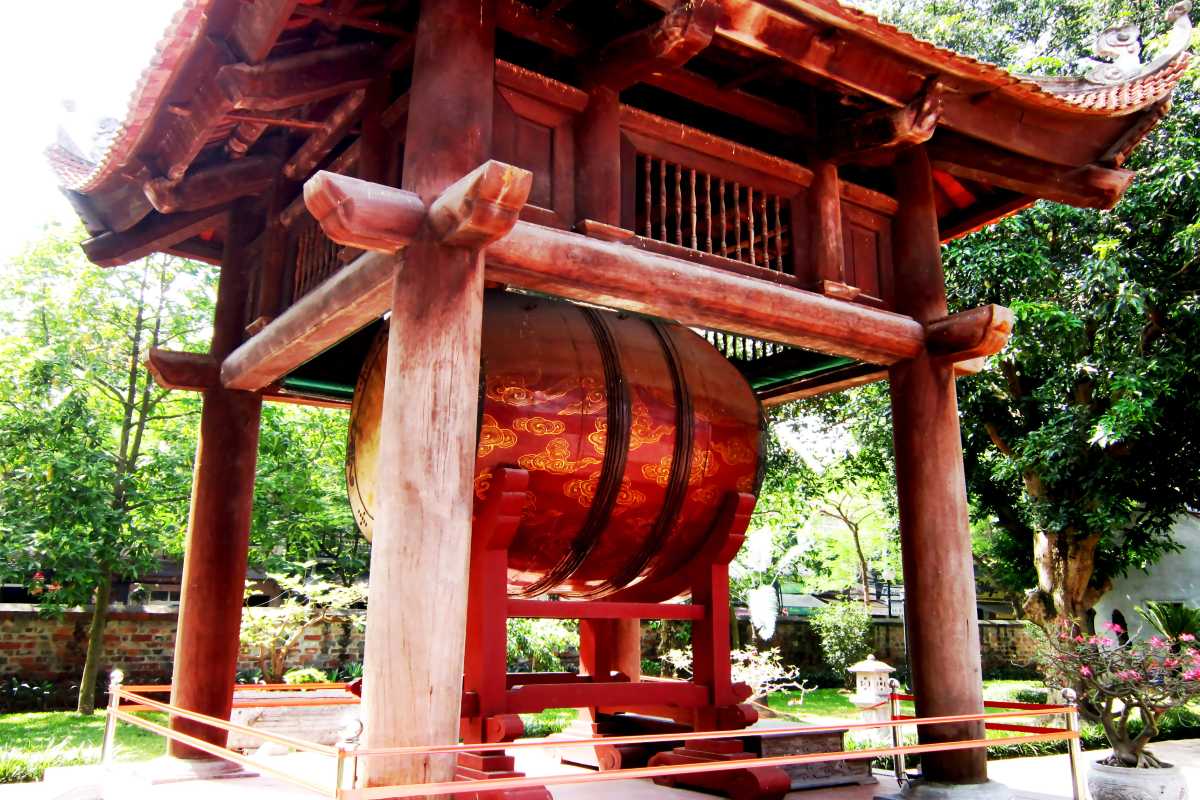
Nearby Attractions and Things to Do
When visiting the Temple of Literature Hanoi, extend your exploration to nearby attractions to enrich your Hanoi experience. The area offers a blend of cultural landmarks, scenic spots, and vibrant local markets that invite immersive sightseeing and leisure. Whether you enjoy walking tours, sampling street food, or visiting museums, there are plenty of options to complement your temple visit.
Plan your itinerary to include these nearby attractions and maximize your cultural journey through Hanoi.

Hoan Kiem Lake and Ngoc Son Temple
Just a short distance from the temple, Hoan Kiem Lake and Ngoc Son Temple offer scenic beauty and cultural significance in a tranquil setting. These spots are perfect for relaxing walks and cultural exploration in the heart of Hanoi.
- Enjoy Hoan Kiem Lake walking tours to take in peaceful waterside views and historic bridges.
- Visit Ngoc Son Temple Hanoi located on a small island within the lake, accessible by the iconic red wooden bridge.
- Experience local daily life as you stroll along the lake’s perimeter, especially in the early morning or evening.
These attractions provide a serene counterpoint to the bustling city and a deeper glimpse into Vietnamese culture.
Discover the charm of Hoan Kiem Lake and Ngoc Son Temple on your visit to Hanoi.
Scenic Walks and Cultural Exploration
Visitors can enjoy a variety of experiences around Hoan Kiem Lake and Ngoc Son Temple:
- Lakeside Walks: Stroll along paved paths surrounded by lush greenery and historic landmarks.
- Cultural Sightseeing: Observe locals practicing tai chi, artists painting, and street musicians performing.
- Photography Spots: Capture iconic views of the lake, temples, and traditional architecture.
These leisurely activities create a perfect blend of relaxation and cultural immersion.
Include scenic walks and cultural exploration in your Hanoi itinerary for a well-rounded experience.
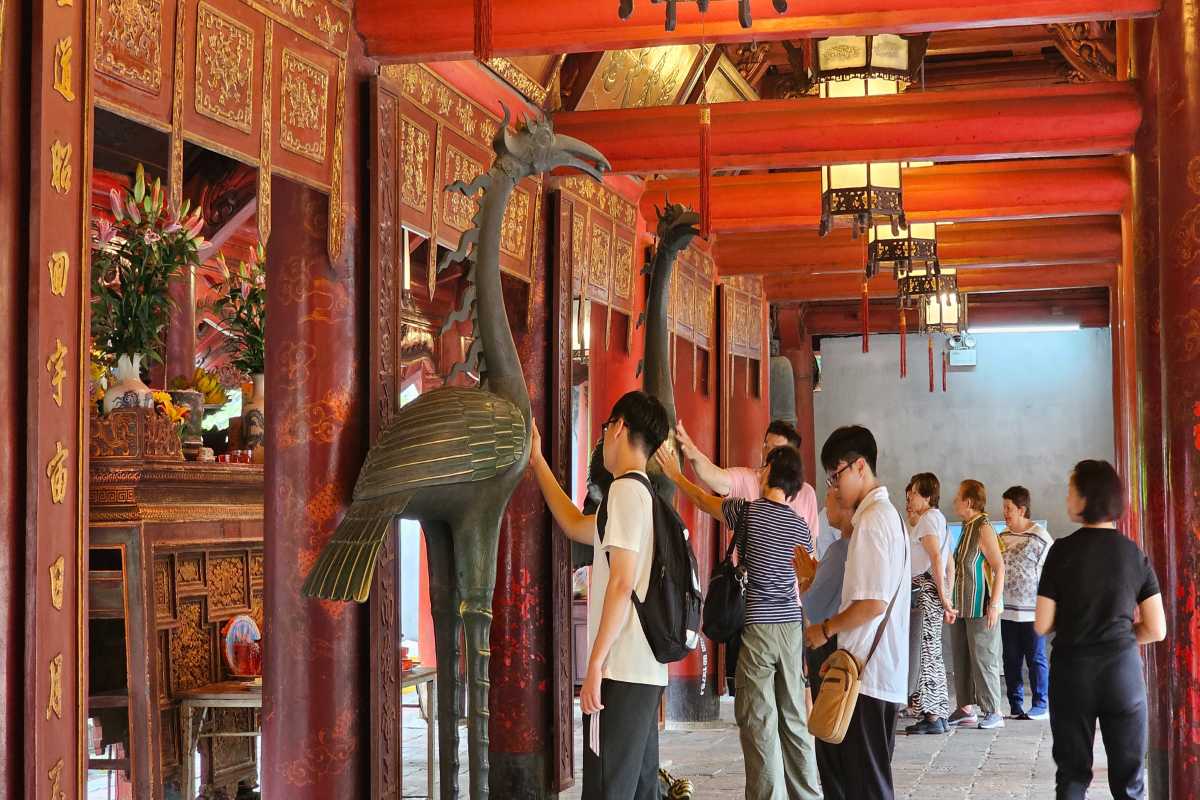
Hanoi Old Quarter Exploration
Exploring the Hanoi Old Quarter offers a vibrant urban experience filled with bustling markets, rich heritage, and authentic local life. This area invites visitors to immerse themselves in the sights, sounds, and flavors that define Hanoi’s cultural heart. From traditional shops to lively street food stalls, the Old Quarter is a must-visit for travelers seeking an energetic and colorful atmosphere.
Join a street food tours hanoi or wander through historic streets to connect with Hanoi’s living history.
Markets, Street Food, and Historic Streets
Key experiences in the Hanoi Old Quarter include:
- Markets in Hanoi Old Quarter: Explore vibrant markets selling textiles, souvenirs, and fresh produce.
- Vietnamese Street Food: Sample iconic dishes like pho, bun cha, and banh mi from popular street vendors.
- Historic Streets: Walk along ancient streets featuring colonial architecture and traditional homes.
These highlights offer a sensory-rich glimpse into Hanoi’s culture and culinary traditions.
Include market visits and street food tasting in your Hanoi itinerary for an authentic local experience.
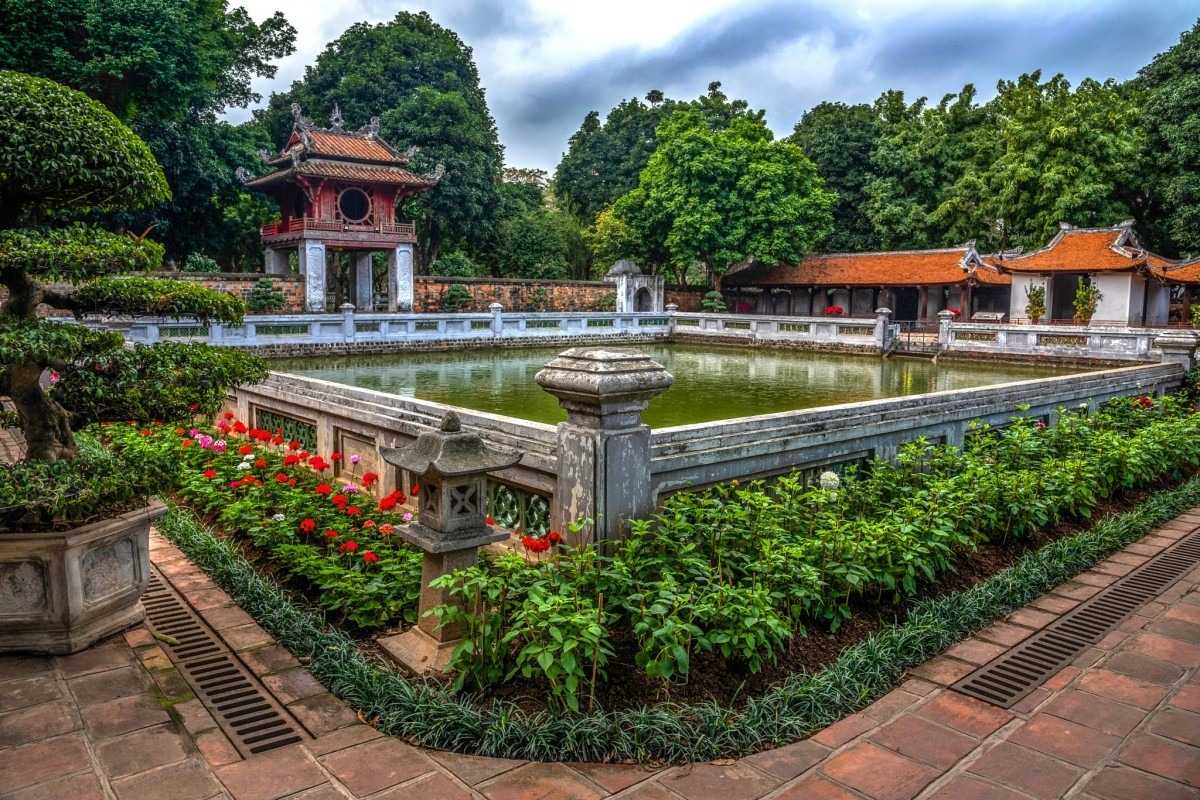
Other Cultural Sites Within Walking Distance
Beyond the Temple of Literature Hanoi, several noteworthy cultural sites lie within easy walking distance, offering opportunities for extended exploration. These destinations provide diverse experiences, from art appreciation to spiritual reflection and outdoor leisure, enriching your visit to Hanoi’s historic district.
Plan your itinerary to include these nearby attractions and deepen your cultural journey.
Vietnam Fine Arts Museum
The Vietnam Fine Arts Museum houses an extensive collection showcasing the country’s artistic heritage. It features traditional and contemporary Vietnamese art, including sculptures, paintings, and ceramics. This cultural museum provides valuable insights into Vietnam’s creative evolution and artistic diversity.
Visiting this museum offers an enriching complement to your exploration of Hanoi’s cultural landmarks.
Quan Thanh Temple
The Quan Thanh Temple is a revered Buddhist temple known for its spiritual significance and classic Vietnamese architecture. Dedicated to the Taoist god Tran Vu, it features intricate woodwork and stone sculptures, reflecting Hanoi’s religious traditions and cultural heritage.
This temple invites quiet contemplation and appreciation of Vietnam’s diverse spiritual landscape.
West Lake Recreational Area
The West Lake area offers a scenic retreat with various outdoor recreational activities:
- Lakeside walking and jogging paths surrounded by natural beauty.
- Boat rentals for leisurely excursions on the lake.
- Cafes and gardens providing relaxing spots to unwind.
This recreational area provides a refreshing contrast to urban sightseeing and a chance to enjoy Hanoi’s natural charm.
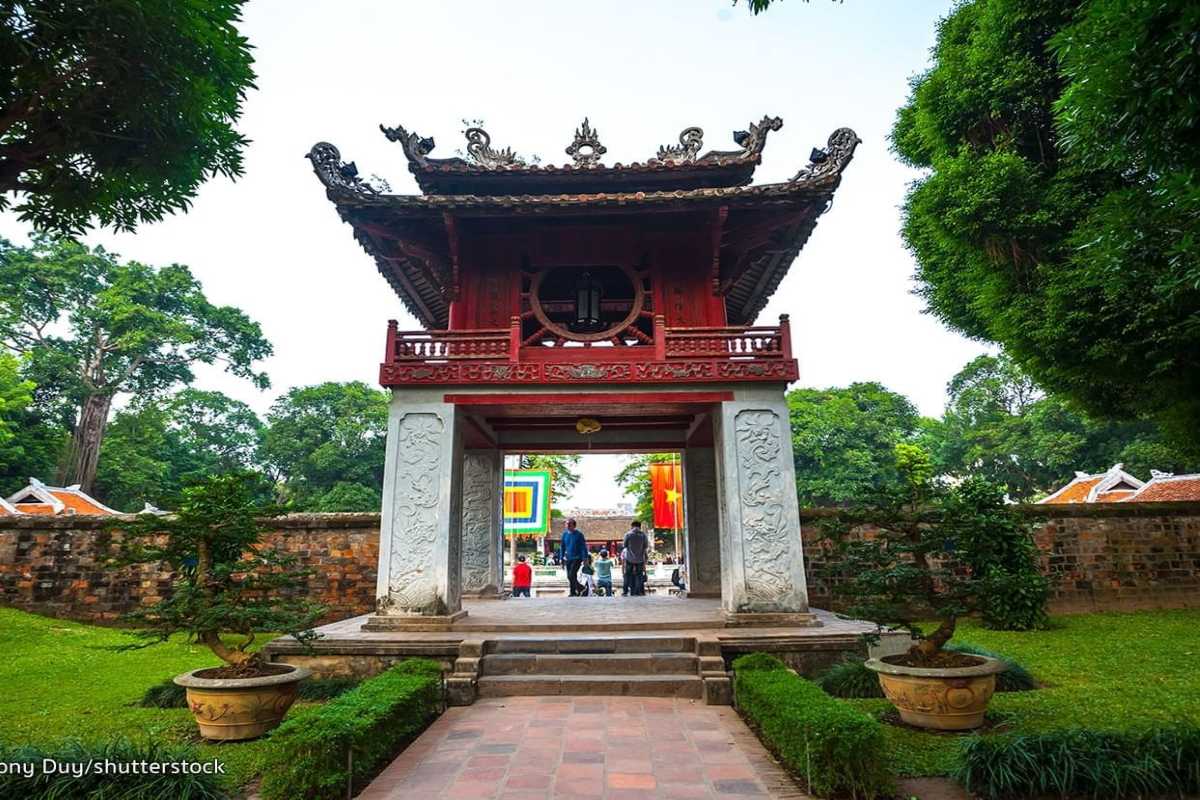
Recommended Itineraries Combining Multiple Attractions
To make the most of your visit to Hanoi, combining multiple attractions into a well-planned itinerary can maximize both efficiency and enjoyment. Whether you have limited time for a half-day cultural tour hanoi or wish to immerse yourself in a full-day hanoi city exploration, thoughtful planning helps you experience the city’s rich heritage seamlessly.
Follow these itinerary suggestions to create a memorable Hanoi adventure that balances cultural highlights with leisure.
Half-Day Cultural Tour
This condensed itinerary is ideal for visitors with limited time:
- Begin at the Temple of Literature Hanoi to explore its historic courtyards and artifacts.
- Head to Hoan Kiem Lake for a relaxing lakeside walk and visit Ngoc Son Temple.
- Conclude with a stroll through the vibrant Hanoi Old Quarter, sampling street food and local markets.
This tour covers key cultural highlights within a manageable timeframe.
Plan your half-day cultural tour hanoi to enjoy a rich experience without feeling rushed.
Full-Day Hanoi City Exploration
For a more comprehensive visit, consider this full-day itinerary:
- Morning: Explore the Temple of Literature Hanoi and nearby Vietnam Fine Arts Museum.
- Midday: Enjoy lunch in the Old Quarter, followed by a walking tour of historic streets.
- Afternoon: Visit Quan Thanh Temple and then relax at West Lake, engaging in lakeside activities.
- Evening: Experience Hanoi’s night markets or cultural performances.
This itinerary offers a balanced mix of history, art, nature, and urban culture.
Maximize your full day sightseeing hanoi with this thoughtfully planned itinerary.
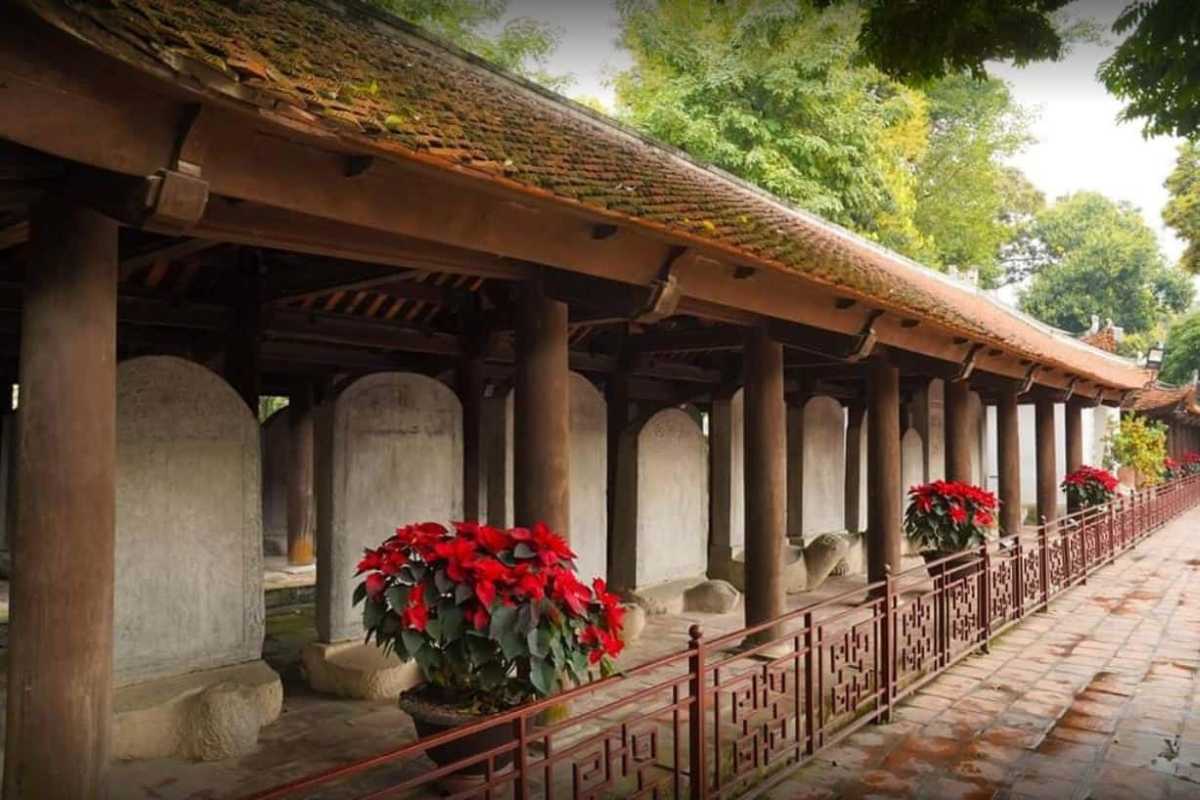
Practical Tips and Visitor Advice
Visiting the Temple of Literature Hanoi is a rewarding experience that can be enhanced with practical preparation. Knowing what to wear, how to respect photography guidelines, and when to visit helps you enjoy your time comfortably and respectfully. This section provides essential advice to ensure your visit is smooth, safe, and memorable.
Prepare well with these tips to make the most of your visit to the Temple of Literature Hanoi.

What to Wear and Prepare
Understanding the appropriate dress code and weather considerations is important for a respectful and comfortable visit to the Temple of Literature Hanoi.
- Dress Code: Wear modest clothing that covers shoulders and knees to honor the temple’s cultural standards.
- Weather Considerations: Hanoi’s climate varies seasonally, so bring sun protection in summer and layers during cooler months.
- Additional Preparations: Carry water, comfortable shoes, and be ready for walking on uneven surfaces.
Following these tips helps you stay comfortable while respecting local customs.
Plan your attire and preparations thoughtfully before visiting the Temple of Literature Hanoi.
Dress Code and Weather Considerations
To ensure respect and comfort during your visit:
- Modest Clothing: Avoid sleeveless tops, shorts, or revealing attire inside the temple grounds.
- Seasonal Weather:
- Hot Season (May–September): Light, breathable fabrics and sun protection are advised.
- Cool Season (October–April): Layered clothing to adjust to variable temperatures.
- Footwear: Wear comfortable walking shoes suitable for stone pathways.
Being mindful of dress and weather enhances your experience and respects temple traditions.
Photography Guidelines and Restrictions
Respectful photography practices are essential at the Temple of Literature Hanoi:
- Follow posted signs regarding photography permissions.
- Avoid flash photography, especially in worship areas.
- Do not photograph visitors or ceremonies without permission.
- Use cameras and phones discreetly to maintain the temple’s peaceful atmosphere.
Adhering to these rules ensures that your photos capture the temple’s beauty without disturbing others.
Respect photography guidelines to preserve the sanctity of the Temple of Literature Hanoi.

Managing Crowds and Avoiding Peak Times
To enjoy a comfortable and peaceful visit to the Temple of Literature Hanoi, planning around busy periods is essential. Knowing the best time to avoid crowds temple of literature hanoi helps you access the site with ease and absorb its beauty without distractions.
Consider scheduling your visit on quieter days and times to make the most of your experience.
Weekday vs Weekend Visits
Understanding visitation patterns can help you select less crowded days:
- Weekdays: Typically less busy, offering a calmer atmosphere and easier access to key areas.
- Weekends: Often crowded with tourists and local visitors, leading to longer wait times and busier pathways.
- Special Holidays: Expect significant crowds during festivals or national holidays.
Choosing a weekday visit increases your chances of a relaxed experience.
Early Morning Visits for Best Experience
Visiting the Temple of Literature Hanoi early in the day offers several advantages:
- Cooler Temperatures: Enjoy the temple grounds in more comfortable weather conditions.
- Fewer Visitors: Experience quiet, unobstructed access to courtyards and exhibits.
- Better Lighting: Ideal for photography with soft morning light enhancing details.
Plan your visit for early morning hours to experience the temple’s serenity fully.

Safety and Health Precautions
Ensuring your health and safety during your visit to the Temple of Literature Hanoi is essential for a comfortable and enjoyable experience. Being prepared with basic health tips and safety awareness helps you focus on exploring the site without worries.
Keep these precautions in mind to protect yourself throughout your visit.
Hydration and Sun Protection Tips
Staying hydrated and protecting yourself from the sun are vital when exploring outdoor cultural sites:
- Drink plenty of water before and during your visit to avoid dehydration.
- Wear a wide-brimmed hat and apply sunscreen to shield your skin from UV rays.
- Use sunglasses and light, breathable clothing for additional protection.
Following these tips keeps you comfortable in Vietnam’s climate while visiting the temple.
Accessibility and Mobility Advice
The Temple of Literature Hanoi strives to accommodate visitors with mobility needs:
- Paths and courtyards offer wheelchair accessibility, though some areas may have uneven surfaces.
- Assistance is available upon request for those requiring support during the visit.
- Plan ahead by contacting the site or your travel provider for specific accessibility arrangements.
These provisions help ensure that all visitors can enjoy the temple’s cultural heritage.

Insider Tips for a Unique Visit
For a truly memorable visit to the Temple of Literature Hanoi, consider these insider tips that offer deeper cultural connection and enriched experiences. These suggestions help you go beyond typical sightseeing to engage meaningfully with the site and its surroundings.
- Use a knowledgeable local guide to uncover hidden stories and historical insights.
- Explore nearby cafes and shops to enjoy authentic local flavors and crafts.
- Prepare by reading recommended books and travel guides for contextual understanding.
Incorporate these tips to make your visit to the Temple of Literature Hanoi uniquely rewarding.
Engaging with Local Guides for Deeper Insights
Connecting with local guides at the Temple of Literature Hanoi provides richer historical context and personal stories:
- Local Guides Temple of Literature Hanoi offer expert knowledge of the temple’s history and cultural significance.
- Personalized tours can include lesser-known facts and answer visitor questions.
- Hiring a guide supports local communities and enhances your cultural understanding.
Consider booking a local guide to enrich your visit with authentic perspectives.
Combining Visit with Nearby Cafes and Shops
Extend your cultural experience by visiting nearby cafes and shops in Van Mieu Ward:
- Cafes Near Temple of Literature Hanoi provide traditional Vietnamese coffee and snacks.
- Local shops offer handicrafts, souvenirs, and art inspired by the temple’s heritage.
- These spots offer relaxing breaks and opportunities to support local artisans.
Include stops at local cafes and shops to complement your temple visit.
Suggested Reading or Resources Before Visiting
Enhance your appreciation of the Temple of Literature Hanoi by exploring these educational resources:
- Books on Confucianism to understand its influence on Vietnamese culture.
- Hanoi Travel Guides offering historical background and practical tips.
- Articles and documentaries covering the temple’s architecture and traditions.
Preparing with these materials enriches your visit and deepens your connection.

Conservation and Cultural Preservation
The Temple of Literature Hanoi stands as a testament to Vietnam’s rich cultural heritage, and ongoing efforts are vital to preserving its historical and architectural integrity. Understanding these conservation projects helps visitors appreciate the importance of protecting this heritage site and encourages responsible tourism practices.
Learn about how preservation efforts maintain the temple’s legacy and how you can contribute to its sustainability.

Ongoing Restoration Efforts
Preserving the authenticity of the Temple of Literature Hanoi involves continuous restoration and maintenance projects that safeguard its historical structures and cultural artifacts.
- Maintaining architectural integrity temple of literature: Skilled artisans use traditional restoration methods to repair and conserve temple buildings.
- Restoration projects vietnam heritage: Collaborative initiatives between government and cultural organizations support historic preservation.
- Building conservation ensures that original materials and designs are respected during repairs.
These efforts protect the temple for future generations while honoring its historical significance.
Maintaining Architectural Integrity
Key activities focus on preserving the temple’s unique architecture through:
- Use of traditional restoration methods replicating original craftsmanship.
- Careful repair of wooden structures, tiled roofs, and stone foundations.
- Regular maintenance schedules to prevent decay and damage from weather.
These measures ensure the temple’s timeless design remains intact and authentic.
Preservation of Stone Stelae and Artifacts
The temple’s stone stelae and artifacts, which hold historical records and scholarly honors, receive dedicated conservation care:
- Cleaning and protecting stone surfaces from erosion and pollution.
- Repairing damaged inscriptions and stabilizing stelae foundations.
- Cataloguing and safeguarding artifacts to prevent deterioration.
This careful preservation honors the cultural relics that tell the story of Vietnam’s academic tradition.

Community and Educational Programs
The Temple of Literature Hanoi supports a variety of programs designed to promote cultural awareness and engage both locals and visitors in preserving its heritage. These initiatives foster community participation and highlight the importance of cultural education in maintaining the temple’s legacy.
Discover how active involvement helps sustain this historic site for future generations.
Promoting Awareness of Cultural Heritage
Educational campaigns and outreach efforts at the temple include:
- Heritage Education: Workshops and lectures that explain the temple’s history and significance.
- Cultural Promotion: Events and publications designed to increase public appreciation for Vietnamese traditions.
- School Programs: Collaborations with local schools to teach younger generations about their cultural roots.
These efforts help deepen public understanding and support for the temple’s preservation.
Involving Locals and Visitors in Preservation
Community involvement plays a vital role in sustaining the Temple of Literature Hanoi:
- Volunteer Programs: Opportunities for locals and visitors to participate in maintenance and clean-up activities.
- Visitor Responsibility: Encouraging respectful behavior and mindful tourism to protect the site.
- Cultural Events: Engaging the public through festivals and interactive experiences that connect people to the heritage.
Such participation nurtures a shared commitment to preserving this treasured cultural landmark.

Sustainable Tourism Practices
Visitors to the Temple of Literature Hanoi play a crucial role in preserving its historical and cultural value by following responsible tourism practices. Understanding how to minimize your impact helps protect this heritage site for future generations while ensuring a respectful and meaningful visit.
Adopt these guidelines to support sustainable tourism at the temple.
Responsible Visiting Guidelines
To protect the temple’s integrity, visitors should:
- Respect all signs and barriers to avoid damaging delicate structures.
- Avoid touching or climbing on artifacts and monuments.
- Refrain from loud noises and disruptive behavior within sacred areas.
- Dispose of trash properly and use designated bins.
- Support local vendors who promote cultural and environmental sustainability.
Following these behaviors helps maintain the temple’s dignity and appeal.
Minimizing Impact on Historic Site
Practical steps to reduce environmental and physical damage include:
- Staying on marked pathways to prevent wear on historic grounds.
- Limiting the use of flash photography to protect artifacts.
- Choosing eco-friendly transport options like walking or cycling where possible.
- Encouraging others to follow preservation practices and share awareness.
Your mindful actions contribute significantly to the temple’s ongoing preservation.

Conclusion
The Temple of Literature Hanoi offers a unique window into Vietnam’s rich cultural heritage and historical depth. Visiting this iconic site provides not only a glimpse into ancient academic traditions but also a meaningful connection to Hanoi’s enduring identity. Embrace the opportunity to explore this cultural treasure and support its preservation for generations to come.
Plan your visit to the Temple of Literature Hanoi and enrich your journey through Hanoi’s cultural heritage.

Summary of Key Highlights and Visitor Benefits
Visiting the Temple of Literature Hanoi brings numerous benefits:
- Experience the historic five courtyards and traditional Vietnamese architecture.
- Appreciate cultural artifacts like the stone stelae of doctoral graduates.
- Engage in enriching activities such as calligraphy workshops and cultural festivals.
- Access practical visitor facilities that ensure comfort and accessibility.
- Support ongoing preservation efforts protecting Vietnam’s heritage.
These highlights combine to create a deeply rewarding travel experience.

Encouragement to Explore Hanoi’s Rich Cultural Heritage
Beyond the temple, Hanoi’s cultural landscape awaits your discovery. From the bustling Old Quarter to tranquil lakes and museums, the city offers diverse historic landmarks and vibrant traditions. Exploring Hanoi’s cultural heritage expands your understanding and appreciation of Vietnam’s unique history and community life.
Include the Temple of Literature Hanoi as a central part of your Hanoi historic landmarks tour to fully immerse yourself in local culture.

Invitation to Share Experiences and Support Preservation
We encourage you to share your experiences of the Temple of Literature Hanoi with others and contribute to its preservation. Engaging with the local community and supporting heritage initiatives helps maintain this precious site for future visitors.
For travel support or itinerary planning, reach out to Asia Travel Links. Let us help you connect deeply with Hanoi’s cultural treasures while fostering responsible tourism.
Mike Nguyen
Travel Advisor
Mobile: +84917506881 (whatsapp available)
Email: contact@asiatravellinks.com
Faqs
The Temple of Literature Hanoi is a historic site dedicated to Confucius and Vietnam’s first national university, Quốc Tử Giám. It represents centuries of scholarly tradition and Vietnamese culture, showcasing beautiful architecture and significant cultural artifacts.
- Founded in 1070 during the Ly Dynasty, it served as an educational and cultural center.
- The site features five courtyards, the Well of Heavenly Clarity, and the Pavilion of the Constellation of Literature.
- It honors Confucian values and remains a symbol of Vietnamese heritage and identity.
Visiting the Temple of Literature Hanoi offers a meaningful glimpse into Vietnam’s rich history and cultural roots. Plan your visit to experience this unique landmark fully.
Getting to the Temple of Literature Hanoi from the Old Quarter is straightforward with several transportation options suited for all travelers.
- Take a taxi or ride-hailing service, which takes about 10 minutes depending on traffic.
- Use public buses heading toward Van Mieu Ward and disembark at the Quoc Tu Giam Bus Stop.
- Walk if you prefer, as the temple is approximately 2 kilometers from the Old Quarter, allowing you to enjoy the city streets en route.
These options provide flexible ways to reach the Temple of Literature Hanoi conveniently. Choose what fits your travel style best.
Yes, there is a modest entrance fee to visit the Temple of Literature Hanoi, which helps maintain this historic site.
- General admission is affordable and may vary slightly with seasons or special exhibits.
- Discounts are often available for students, seniors, and groups.
- Ticket booths are located near the main entrance for easy purchase.
Knowing the entrance fees in advance helps you prepare your visit smoothly to the Temple of Literature Hanoi.
The Temple of Literature Hanoi operates daily with consistent opening and closing times, allowing flexible visit planning.
- Typically open from early morning around 8:00 AM until late afternoon near 5:00 PM.
- Hours may adjust slightly on holidays or during festivals.
- Arriving early is recommended to avoid peak crowds.
Understanding the operating hours ensures you maximize your experience at the Temple of Literature Hanoi.


